Cruise Control In Cars Explained (And How To Safely Use It)

Have you ever wished you could set your car's speed and just sit back and relax while driving on a long stretch of highway? If that's the case, then cruise control is just the ticket you've been searching for—and the good news is, it's a standard feature in most cars these days!
Cruise control is a handy feature for drivers that allows you to maintain a constant speed without having to keep your foot on the gas pedal. In this post, we'll explore how cruise control works, its benefits, and how to use it safely to make your driving experience more comfortable.

Understanding Cruise Control
Cruise control, also known as speed control, is an electronic system that allows you to maintain a specific speed without manually controlling the accelerator pedal. The system uses sensors and electronic components to control the throttle and keep your car moving at a desired speed. First introduced in the late 1950s, cruise control has since become a standard feature in most modern vehicles you see on the road today.
How Does It Work?
At its core, cruise control involves a series of sensors that monitor the vehicle's speed and a control unit that regulates the throttle. When the driver sets the cruise control to a specific speed, the system adjusts the throttle to maintain that speed. If the car begins to slow down because of an incline (e.g. going up a hill), the system will open the throttle to accelerate. Conversely, if the car starts to speed up due to a declin (e.g. going downhill), the system will close the throttle to decelerate.
Modern cruise control systems also come with additional features like adaptive cruise control (ACC), which uses radar or cameras to detect vehicles ahead and automatically adjusts the speed to maintain a safe following distance (more on this BELOW).
The History of Cruise Control
The invention of cruise control can be traced back to the late 1940s and early 1950s, when engineer Ralph Teetor developed the first-speed control system. This innovative feature was designed to help drivers maintain a steady speed, reduce fatigue while driving, and improve fuel efficiency. Over the years, cruise control technology has undergone significant advancements, leading to the development of sophisticated systems like adaptive cruise control.
Types of Cruise Control Systems
Today, drivers can choose from a range of cruise control systems, each with its own unique features and functionalities.
Conventional Cruise Control
Conventional cruise control is like your old reliable friend. It's pretty basic and doesn't have any fancy bells and whistles. You just set the speed you want, and it'll keep your car cruising along at that speed, no problem. It's perfect for those long drives on open highways, but it doesn’t automatically react to other cars on the road.
So, if the car in front of you slows down, you'll need to step in and adjust your speed manually. This trusty system comes standard on most cars and is great for saving some fuel on those long road trips .
Adaptive Cruise Control (ACC)
Now, if conventional cruise control is your old reliable friend, then Adaptive Cruise Control (ACC) is like that friend's tech-savvy younger cousin. ACC isn't just maintaining your set speed, it's also keeping an eye on the car in front of you. If that car slows down, ACC slows your car down to keep a safe distance .
It's like having an extra set of eyes on the road, making highway driving a breeze. Plus, some ACC systems can even handle stop-and-go traffic, bringing your car to a full stop and then picking up speed again when traffic gets moving.
Predictive Cruise Control
Predictive Cruise Control is like the fortune teller of cruise control systems. It uses GPS and map data to see into the future and predict what's coming up on the road, like hills or curves, and adjusts your speed accordingly. This means you get a smoother ride and better fuel efficiency, but it all depends on the quality of the GPS and map data. If that's a bit out of date, your fortune-telling cruise control might not be so accurate. It's usually found in more high-end vehicles where top-notch fuel efficiency is a focus for the engineers.
Cooperative Adaptive Cruise Control (CACC)
And then we have Cooperative Adaptive Cruise Control, or CACC. This is like the team player of cruise control systems. It allows cars to talk to each other, coordinating their speeds to maintain a safe distance. It's like having a well-coordinated team of cars all working together to make the traffic flow smoother and reduce congestion. Picture it like a synchronized dance on the highway, where every car knows its place and keeps the right distance. This tech is still pretty new, but it's got a lot of potential. Imagine a future where traffic jams could be a thing of the past.
Remember, these systems are here to make your drive smoother and safer, but they're not a replacement for your attention. No matter how fancy your cruise control is, these systems can be greatly influenced by external conditions like weather and traffic, and they should always be used as aids, not replacements, for attentive driving.
Common Cruise Control Symbols and Indicators
Understanding the various symbols and indicators associated with cruise control is important for safe and effective usage. These symbols typically appear on the dashboard (or on the side of the steering wheel) and may include a speedometer icon, "SET," "RES" (resume), and "CANCEL". Be sure to consult your vehicle's owner's manual for specific details and explanations of these symbols.
Benefits of Using Cruise Control
Cruise control offers several benefits to drivers, especially during long road trips or highway driving.
Fuel Efficiency
One of the main advantages of using cruise control is improved fuel efficiency. By maintaining a constant speed, cruise control helps reduce fuel consumption, leading to better gas mileage. Rapid acceleration and deceleration, on the other hand, can lead to increased fuel consumption.
Comfort and Convenience
Cruise control allows drivers to take their foot off the accelerator pedal, reducing fatigue and improving comfort during long drives. It also helps drivers avoid unintentionally exceeding the speed limit by setting a maximum speed.
When used correctly, cruise control can contribute to safer driving. By maintaining a steady speed, it reduces the likelihood of erratic driving behavior and potential accidents. However, it is important to note that cruise control shouldn't be used in certain conditions, such as heavy traffic or slippery roads .
Troubleshooting Common Cruise Control Issues
Occasionally, you may encounter issues with your cruise control systems. Common problems include cruise control not engaging or disengaging unexpectedly. Possible causes may include a faulty brake light switch, malfunctioning sensors, or issues with the control module. If you experience any problems with your cruise control, it's best to have a qualified technician diagnose and repair the issue for you.
Cruise Control and Road Etiquette
Practicing proper road etiquette while using cruise control is essential for a safe and pleasant driving experience. Here are some tips on how to use cruise control courteously:
- Avoid using cruise control in heavy or congested traffic, as it may hinder your ability to react quickly to changing conditions.
- Be mindful of other drivers when setting your speed. Avoid setting a speed that's significantly slower or faster than the flow of traffic.
- If you are in the passing lane and using cruise control, be sure to adjust your speed or temporarily disengage the system to allow faster-moving vehicles to pass.
- Always signal your intentions, such as lane changes or exiting the highway, even when using cruise control.
The Future of Cruise Control Technology
Cruise control technology plays a vital role in the development of autonomous vehicles, or self-driving cars . In autonomous vehicles, cruise control systems work together with other advanced driver assistance systems (ADAS) to enable the vehicle to operate without direct driver input. These systems include lane-keeping assist, automatic emergency braking, and collision avoidance systems.
As autonomous vehicles become more sophisticated, cruise control technology is evolving to support higher levels of automation. For example, some autonomous vehicles are equipped with advanced cruise control systems that can navigate complex traffic scenarios, merge onto highways, and even change lanes autonomously.
While fully autonomous vehicles are still in the developmental stages, the integration of cruise control technology is a big step toward creating safer and more efficient transportation systems.
As automotive tech continues to advance, cruise control systems are becoming more intelligent and capable. Here are some potential developments we can expect to see in the future of cruise control technology:
- Integration of artificial intelligence (AI) to improve decision-making and responsiveness in adaptive cruise control systems.
- Enhanced connectivity and vehicle-to-vehicle (V2V) communication, enabling cars to share information about traffic conditions and coordinate their speeds for smoother traffic flow.
- Greater customization and personalization options, allowing drivers to set preferences for cruise control behavior, such as following distance and speed adjustments.
Overall, the future of cruise control technology holds promise for creating a more seamless and enjoyable driving experience, with a focus on safety, comfort, and sustainability.
Debunking Myths About Cruise Control
Let's address and debunk some common misconceptions about cruise control:
Myth : Cruise control can be used as a substitute for driver attention.
Fact : Cruise control is a driver assistance feature, not a replacement for attentive driving. Drivers should always remain alert and ready to take control when necessary.
Myth : Cruise control increases the risk of accidents.
Fact : When used appropriately, cruise control can contribute to safer driving by maintaining a steady speed and reducing erratic driving behavior.
Cruise control is a valuable feature that can enhance your driving experience by providing comfort, convenience, and fuel efficiency. Remember to use it safely and appropriately based on driving conditions, and always stay attentive while on the road.
If you found this post informative and want to learn more about car features, driving tips, and automotive technology, be sure to subscribe to our newsletter for regular updates. We're here to help you stay informed and enhance your driving experience.
Frequently Asked Questions About Cruise Control
To further enhance your understanding of cruise control, here are answers to some common questions:
Q : Can cruise control be used in all weather conditions?
A : It isn't advisable to use cruise control in adverse weather conditions, such as heavy rain, snow, or icy roads, as it may reduce your ability to respond quickly to changing road conditions.
Q : Can I use cruise control in urban areas with frequent stop-and-go traffic?
A : Cruise control is best suited for open roads and highways with consistent traffic flow. It isn't recommended for use in urban areas with frequent stops or heavy traffic.
Q : Does cruise control work at any speed?
A : Cruise control typically has a minimum speed threshold, below which it can't be engaged. This threshold varies by vehicle, so check your owner's manual for specific information.
About the Author: This article was crafted by the LOOP Marketing Team. Comprising of seasoned professionals with expertise in the insurance industry, our team is dedicated to providing readers with accurate, up-to-date, and valuable information. At LOOP, we're passionate about helping families navigate the world of car insurance, ensuring they get the best coverage at the most affordable rates. Learn more about our mission and values here.
For more insights on auto insurance and other related topics, visit our blog .
Quick Navigation
Check out how much you could save today.
Browse related articles

How To Ship Your Car To Another State: A Guide For Curious Movers

The Best Gifts For New Drivers

The Real Dangers Of Texting And Driving
Life has many roads. your weekly navigator is just a click away..
- PRO Courses Guides New Tech Help Pro Expert Videos About wikiHow Pro Upgrade Sign In
- EDIT Edit this Article
- EXPLORE Tech Help Pro About Us Random Article Quizzes Request a New Article Community Dashboard This Or That Game Popular Categories Arts and Entertainment Artwork Books Movies Computers and Electronics Computers Phone Skills Technology Hacks Health Men's Health Mental Health Women's Health Relationships Dating Love Relationship Issues Hobbies and Crafts Crafts Drawing Games Education & Communication Communication Skills Personal Development Studying Personal Care and Style Fashion Hair Care Personal Hygiene Youth Personal Care School Stuff Dating All Categories Arts and Entertainment Finance and Business Home and Garden Relationship Quizzes Cars & Other Vehicles Food and Entertaining Personal Care and Style Sports and Fitness Computers and Electronics Health Pets and Animals Travel Education & Communication Hobbies and Crafts Philosophy and Religion Work World Family Life Holidays and Traditions Relationships Youth
- Browse Articles
- Learn Something New
- Quizzes Hot
- This Or That Game New
- Train Your Brain
- Explore More
- Support wikiHow
- About wikiHow
- Log in / Sign up
- Cars & Other Vehicles
- Driving Vehicles
- Efficient Driving
How to Use Cruise Control on a Car
Last Updated: February 20, 2024 Fact Checked
This article was co-authored by Simon Miyerov . Simon Miyerov is the President and Driving Instructor for Drive Rite Academy, a driving academy based out of New York City. Simon has over 8 years of driving instruction experience. His mission is to ensure the safety of everyday drivers and continue to make New York a safer and efficient driving environment. This article has been fact-checked, ensuring the accuracy of any cited facts and confirming the authority of its sources. This article has been viewed 480,580 times.
Many cars come with cruise control systems, a great feature that will automatically keep a car driving at a set speed. This gives your feet a rest, and helps you save gas and avoid speeding tickets. Familiarize yourself with your car's cruise control switches, located on or near the steering wheel. Make sure to use cruise control only in safe conditions, and to stay focused on the road. Once you know how to operate cruise control, you're ready for a comfortable, efficient drive!
Get Car Support Solve Any Problem
We’re sorry we don’t support the car you are looking for. Please enter its make, model, and year below so that we can add support for it.
Operating Cruise Control

- Check your car's operating manual if you are unable to find the cruise control switches.

- Many cars have additional buttons to increase or decrease speed (marked by a +/-) when using cruise control.

- For some car models, cruise control will not operate below a certain speed, such as 40 miles (64 km) per hour.

- To stop cruise control briefly (such as when a car in front of you brakes), just press the brake as you normally would.
- If you are driving a manual, you can also disengage cruise control by pressing the clutch.
- If you are completely done using cruise control, you can press the “OFF” or "ON/OFF" switch.
- If your car has a cruise control “CANCEL” switch, you can also press that to stop it.

- If your car has a +/- button for cruise control, press this when you want to raise or lower your car's speed.
Using Cruise Control Safely and Efficiently

- Using cruise control on busy streets can also be dangerous. Since you yourself are not in complete control of your car, you may be paying less attention. You might brake or react to other cars more slowly than normal, increasing the chance of an accident.

- Wet or snowy roads
- Hilly, steep, or mountainous areas
- Winding roads

Expert Q&A

You Might Also Like

- ↑ Simon Miyerov. Driving Instructor. Expert Interview. 4 December 2019.
- ↑ https://www.youtube.com/watch?v=jKtBSFoAYlg
- ↑ http://www.thecarexpert.co.uk/cruise-control/
About This Article

If you want to use cruise control on your car, make sure you're on the open road, such as a freeway or highway. Additionally, avoid using cruise control in rainy or snowy conditions, or if you're driving through a city, since you'll need to change speed and turn regularly. When you're ready to switch to cruise control, press the "Set" switch, which is usually found on the steering column or on the wheel, when your car reaches the desired speed. To stop cruise control, press on the brake or push the clutch if you're driving a manual car. To learn when to avoid using cruise control and how it can help you save on fuel, read on! Did this summary help you? Yes No
- Send fan mail to authors
Reader Success Stories
Joseph Adizero
Dec 17, 2020
Did this article help you?

Suraj Sinha
Jun 17, 2016
Ashish Vohra
Oct 17, 2017
Jul 26, 2017
Alejandro Martinez
Jul 25, 2016

Featured Articles

Trending Articles

Watch Articles

- Terms of Use
- Privacy Policy
- Do Not Sell or Share My Info
- Not Selling Info
wikiHow Tech Help Pro:
Develop the tech skills you need for work and life
What is cruise control in a car? Meaning and how does it work?
Cruising on the highway can be a lot of fun. However, it demands maintaining a constant speed for a long time. To achieve that, you need to press the accelerator pedal continuously, which can get tiring after a while. That’s when the cruise control feature of your car comes into play. So, what exactly does it do and how does it work? This article explains cruise control in a car and how to use it in different driving conditions. So, without stepping on the ‘brake’ pedal, read on!

What is cruise control in a car?
It is a system that accurately maintains the speed set by the driver without any external intervention. It automatically controls the speed of a car and only allows the vehicle to hit a speed set by the driver. It does not allow the car to cross that speed limit. This feature has become common among modern cars. You can even find this feature in the top-spec variants of some of the affordable hatchbacks and sedans.
How does the cruise control system work?
Cruise control in a car replicates the inputs of a driver to control the vehicle’s speed. But instead of pressing the accelerator pedal, it uses a different mechanism to maintain a constant cruising speed.
Initially, the system used a cable to control the accelerator (throttle valve). You can find these mechanisms in older cars. It adjusted the vehicle's speed by engaging the throttle with the help of an actuator that is controlled by a cable. The throttle valve is responsible for the power and speed generated by the engine. So, depending on the speed set by the driver, the system automatically adjusted the throttle position.
But with the advent of technology in the automotive industry, the cruise control system in modern cars entirely relies on electronics. Instead of a cable, the system now communicates with the throttle via various sensors connected to a computer (ECU - Electronic Control Unit). So, when you set a speed, the ECU calculates the throttle position and engages the throttle wirelessly.
The system constantly maintains the speed set by you (driver) irrespective of road conditions. For example, if there’s an incline ahead, cruise control adjusts the throttle accordingly to maintain the same speed.
How to use cruise control?
Before engaging the cruise control in a car, remember that the system is not intended to be used in adverse weather conditions. For example, you may refrain from driving the car at cruising speeds when it’s raining heavily. The low visibility and unpredictable road conditions make it unsafe to drive at such speeds. So, always be mindful of the weather condition and your surroundings before engaging the system.
Here are the steps to use cruise control.
Step 1 - Before activating cruise control, build up speed by accelerating the car. However, do not cross the speed limit of that particular road/highway.
Step 2 - Once your car reaches the desired speed, activate cruise control. Generally, the system activation button will be on the steering wheel. However, locating the exact button when the vehicle is parked is better to avoid any distractions while driving.
Step 3 - Next, you can take your foot off the accelerator pedal. If you have set the cruise control correctly, the car should maintain the cruising speed.
Step 4 - Keep your eyes on the road as it is very easy to get distracted when the car is accelerating automatically.
Step 5 - If you wish to accelerate when the cruise control is engaged, you can press the ‘+’ button on the steering wheel to briefly engage the accelerator pedal.
Step 6 - To decelerate, press the ‘-’ button on the steering wheel. You can also tap on the brake pedal. However, as a safety precaution, almost all cars will deactivate the cruise control as soon as you press the brake pedal.
The buttons to activate cruise control or accelerate/decelerate may vary from one car to another. So, do check the owner’s manual before fiddling around with the system. It’s better if you are familiar with the controls before driving the vehicle, as it will avoid unnecessary distractions.
How to install cruise control in a car?
Can you install cruise control in a car? The answer is both yes and no. You may install an aftermarket kit if it’s an old car that does not rely on electronics to control all the engine-related functions. But installing such a kit becomes almost impossible in modern cars due to the complex electronics.
It is a complex process to install the system in new cars as you have to fiddle with electronics, and it also requires the fitment of hardware. So, it can only be done during the time of car manufacturing. Moreover, if you try installing an aftermarket kit, you may void the warranty offered by the OEM (Original Equipment Manufacturer). On top of that, it is not recommended to go for an aftermarket cruise control kit as it may compromise safety.
Newly launched cars are equipped with cruise control except for a few entry-level models. So, instead of investing in retrofitting a system, it's better and safer to spend that money on buying a car with a built-in system.
Adaptive cruise control
The new technology also allows the system to automatically adjust the car's speed depending on the speed of the vehicle ahead. This feature is known as adaptive cruise control. It ensures that the car maintains a safe distance from the vehicle ahead despite the constant change in speed of the vehicle moving ahead. It is instrumental in highways or during rush hour traffic and reduces driver fatigue.
It is also a level 1 autonomous driving system. The system uses radar sensors to calculate the speed and distance of the car ahead. For instance, if the vehicle in front of you slows down/speeds up, a car with adaptive cruise control will reduce speed/accelerate automatically without any external inputs.
You can find this feature in premium cars. But gradually, it is trickling down to not so expensive cars as well. Adaptive cruise control is a part of an advanced driver assistance system.
Pros and cons of cruise control
Cruise control makes driving easy and convenient, and at the same time, it also takes care of safety. But like every other feature, it has its own set of advantages and disadvantages, which are elaborated in the following section.
Below are some of the pros of the cruise control system.
Reduces driver fatigue: The primary role of cruise control is to maintain a constant speed without you having to step on the accelerator pedal. That means you can rest your right foot and can stay relaxed. It is helpful when you drive long distances on highways where you need to maintain a constant speed for long durations.
Improves fuel economy: When maintaining a constant speed, the engine will not get stressed as it need not change the intensity of operation. To put it in a simple way, when the engine runs at constant RPMs (Revolutions Per Minute) , it consumes less fuel. Hence, when driving long distances on highways, the cruise control system can improve fuel economy.
Helps to drive within the speed limit: You may drive at normal speed on busy urban roads. But when you hit the wide and smooth highways, you may end up crossing the speed limit. You may not even realise that you have crossed the speed limit until you glance at the speedometer. Cruise control can help you in this regard as you can easily set a speed limit and let the system do the work. The system will not allow the car to go over the speed set by you.
Increase/decrease speed with a click of a button: Typically, you use the accelerator and brake pedal to increase/decrease the speed of your car. But when the cruise control is engaged, you can even use the buttons to do the job for you. However, ensure that you are familiar with the functions of the buttons, as it may feel unnatural in the beginning. It is best to practice using the buttons in a safe environment before using them on public roads.
Works well with automatic cars: Cruise control works best with automatic cars as you need not worry about changing gears. The ECU or the onboard computer shifts the gears automatically when there is a change in speed and works well when cruising automatically. It means you only need to focus on steering the vehicle.
As mentioned earlier, cruise control also has some cons, which are listed below.
Limited use on Indian roads: Cruise control is suited for wide and long highways where drivers follow the rules. Although India has some excellent highways, many drivers may disregard rules which creates an unpredictable environment. Also, cattle, dogs and other animals may venture into public roads and make the situation even more tricky. Hence, it may be challenging to cruise at high-speeds.
Hampers reaction time: As mentioned above, the roads in India are unpredictable. You may have to perform emergency braking to avoid any obstacles on the road. When driving with manual controls, your right foot will be on the accelerator pedal, and it is easy to move your foot to step on the brake pedal in an emergency. But, when using cruise control, your right foot will be resting on the floor of the car, and it may take a bit more time to reach the brake pedal. This difference in reaction time may be the difference between you avoiding an obstacle or crashing into it.
Can induce drowsiness: If you use cruise control for long durations, you may end up feeling drowsy. Since the car is accelerating at a constant speed, your alertness level may drop in the long run. Hence, it is recommended that you manually control the vehicle once every 10-15 minutes when using the automatic cruising feature on highways.
Cannot use at night: Cruise control is of no use during night drives as the visibility is poor. Even with well-lit roads, the visibility is not as good as daylight. So, allowing the car to maintain a constant speed may be a safety concern, even on roads that are familiar to you.
It does not work well with manual cars: In a manual car, you have to change gears by yourself. The cruise control will handle the acceleration/deceleration, but you still need to shift the gears manually to maintain the optimum RPM. It can be irritating at times when you need to slow down and accelerate immediately. It may not be a dealbreaker, but it kind of refrains you from experiencing the full potential of the automatic cruising system.
Cruise control vs adaptive cruise control: Key differences
The below table highlights the key differences between cruise control and adaptive cruise control.
What is the difference between cruise control and speed limiter?
Sometimes you may get confused between cruise control and speed limiter as both are related to the car's speed. Refer to the table below to understand the difference between both the systems.
List of cruise control cars In India
Cruise control is a feature that we can see in a lot of cars. Gone are the days when this feature was limited to premium vehicles. Even vehicles with affordable price tags are equipped with intelligent features. Here’s the list of popular cars with the automatic cruising system.
List of adaptive cruise control cars in India
Adaptive cruise control is the more advanced version of the standard automatic cruising system. Currently, this system can be seen only in premium cars in India. Below is the list of popular cars with adaptive cruise control.
Frequently asked questions
Here are some of the most commonly asked questions related to cruise control in cars.
No, it is not a standard feature in cars. However, almost all vehicles costing above Rs. 5 lakhs are equipped with cruise control.
It is not advisable to install an aftermarket cruise control kit in your car as new vehicles have complex electronics. Moreover, installing such a kit involves a complicated process, and it may also void the warranty provided by the car manufacturer.
Typically, the cruise control button is located on the steering wheel for easy access. However, the location of the button may vary depending on the make and model.
Yes, you can use cruise control in a manual car. However, you need to manually control the gear shifts when the vehicle slows down or accelerates when the system is engaged.
What is a Car Muffler? How Does a Muffler Work?
Team AckoDrive Apr 11, 2024
What is an Infotainment System? How does Infotainment Work?
Team AckoDrive Apr 8, 2024
What are the Benefits of Electric Cars in India?
Car Battery Life: Everything You Need to Know
Team AckoDrive Apr 5, 2024
How Does a Car Steering Work?
All Articles

Advertisement
How Cruise Control Systems Work
- Share Content on Facebook
- Share Content on LinkedIn
- Share Content on Flipboard
- Share Content on Reddit
- Share Content via Email
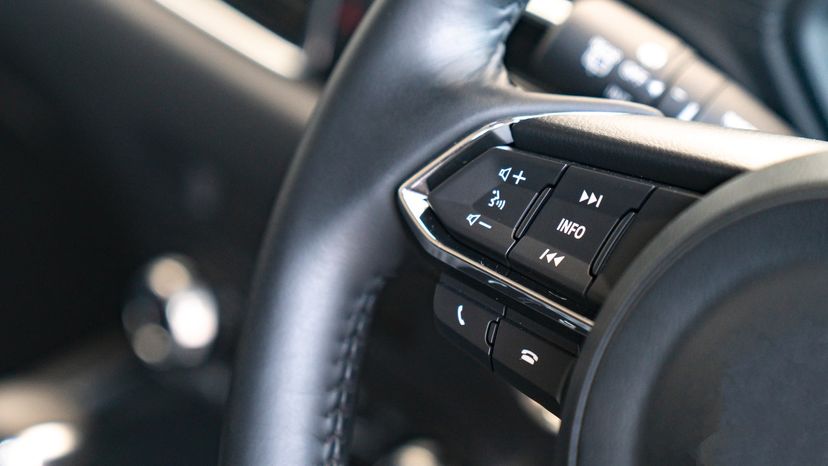
Cruise control is an invaluable feature on American cars. Without cruise control, long road trips would be more tiring, for the driver at least, and those of us suffering from lead-foot syndrome would probably get a lot more speeding tickets.
Cruise control is far more common on American cars than European cars, because the roads in America are generally bigger and straighter, and destinations are farther apart. With traffic continually increasing, basic cruise control is becoming less useful, but instead of becoming obsolete, cruise control systems are adapting to this new reality -- soon, cars will be equipped with adaptive cruise control, which will allow your car to follow the car in front of it while continually adjusting speed to maintain a safe distance.
In this article, we'll learn how a conventional cruise control system works, and then we'll take a look at adaptive cruise control systems that are under development.
What Cruise Control Does
Cruise control acceleration and deceleration, controlling the cruise control, adaptive cruise control.
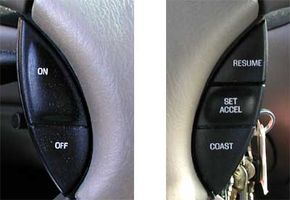
The cruise control system actually has a lot of functions other than controlling the speed of your car. For instance, the cruise control pictured below can accelerate or decelerate the car by 1 mph with the tap of a button. Hit the button five times to go 5 mph faster. There are also several important safety features -- the cruise control will disengage as soon as you hit the brake pedal, and it won't engage at speeds less than 25 mph (40 kph).
The system pictured below has five buttons: On, Off, Set/Accel, Resume and Coast. It also has a sixth control -- the brake pedal, and if your car has a manual transmission the clutch pedal is also hooked up to the cruise control.
- The on and off buttons don't actually do much. Hitting the on button does not do anything except tell the car that you might be hitting another button soon. The off button turns the cruise control off even if it is engaged. Some cruise controls don't have these buttons; instead, they turn off when the driver hits the brakes, and turn on when the driver hits the set button.
- The set/accel button tells the car to maintain the speed you are currently driving. If you hit the set button at 45 mph, the car will maintain your speed at 45 mph. Holding down the set/accel button will make the car accelerate; and on this car, tapping it once will make the car go 1 mph faster.
- If you recently disengaged the cruise control by hitting the brake pedal, hitting the resume button will command the car to accelerate back to the most recent speed setting.
- Holding down the coast button will cause the car to decelerate, just as if you took your foot completely off the gas. On this car, tapping the coast button once will cause the car to slow down by 1 mph.
- The brake pedal and clutch pedal each have a switch that disengages the cruise control as soon as the pedal is pressed, so you can shut off the cruise control with a light tap on the brake or clutch.
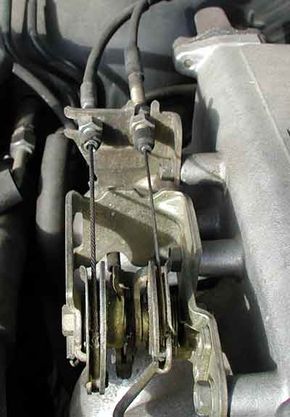
The cruise control system controls the speed of your car the same way you do -- by adjusting the throttle position . But cruise control actuates the throttle valve by a cable connected to an actuator , instead of by pressing a pedal. The throttle valve controls the power and speed of the engine by limiting how much air the engine takes in (see How Fuel Injection Systems Work for more details).
In the picture above, you can see two cables connected to a pivot that moves the throttle valve. One cable comes from the accelerator pedal, and one from the actuator. When the cruise control is engaged, the actuator moves the cable connected to the pivot, which adjusts the throttle; but it also pulls on the cable that is connected to the gas pedal -- this is why your pedal moves up and down when the cruise control is engaged.
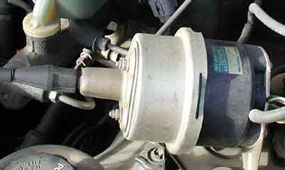
Many cars use actuators powered by engine vacuum to open and close the throttle. These systems use a small, electronically-controlled valve to regulate the vacuum in a diaphragm. This works in a similar way to the brake booster , which provides power to your brake system.
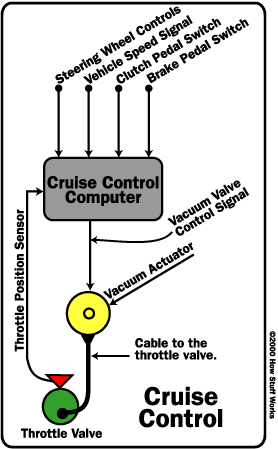
The brain of a cruise control system is a small computer that is normally found under the hood or behind the dashboard. It connects to the throttle control seen in the previous section, as well as several sensors. The diagram below shows the inputs and outputs of a typical cruise control system.
A good cruise control system accelerates aggressively to the desired speed without overshooting, and then maintains that speed with little deviation no matter how much weight is in the car, or how steep the hill you drive up. Controlling the speed of a car is a classic application of control system theory . The cruise control system controls the speed of the car by adjusting the throttle position, so it needs sensors to tell it the speed and throttle position. It also needs to monitor the controls so it can tell what the desired speed is and when to disengage.
The most important input is the speed signal; the cruise control system does a lot with this signal. First, let's start with one of the most basic control systems you could have -- a proportional control .
In a proportional control system, the cruise control adjusts the throttle proportional to the error, the error being the difference between the desired speed and the actual speed. So, if the cruise control is set at 60 mph and the car is going 50 mph, the throttle position will be open quite far. When the car is going 55 mph, the throttle position opening will be only half of what it was before. The result is that the closer the car gets to the desired speed, the slower it accelerates. Also, if you were on a steep enough hill, the car might not accelerate at all.
Most cruise control systems use a control scheme called proportional-integral-derivative control (a.k.a. PID control). Don't worry, you don't need to know any calculus to make it through this explanation -- just remember that:
- The integral of speed is distance.
- The derivative of speed is acceleration.
A PID control system uses these three factors -- proportional, integral and derivative, calculating each individually and adding them to get the throttle position.
We've already discussed the proportional factor. The integral factor is based on the time integral of the vehicle speed error . Translation: the difference between the distance your car actually traveled and the distance it would have traveled if it were going at the desired speed, calculated over a set period of time. This factor helps the car deal with hills, and also helps it settle into the correct speed and stay there. Let's say your car starts to go up a hill and slows down. The proportional control increases the throttle a little, but you may still slow down. After a little while, the integral control will start to increase the throttle, opening it more and more, because the longer the car maintains a speed slower than the desired speed, the larger the distance error gets.
Now let's add in the final factor, the derivative . Remember that the derivative of speed is acceleration. This factor helps the cruise control respond quickly to changes, such as hills. If the car starts to slow down, the cruise control can see this acceleration (slowing down and speeding up are both acceleration) before the speed can actually change much, and respond by increasing the throttle position.
Two companies are developing a more advanced cruise control that can automatically adjust a car's speed to maintain a safe following distance. This new technology, called adaptive cruise control , uses forward-looking radar , installed behind the grill of a vehicle, to detect the speed and distance of the vehicle ahead of it.
Adaptive cruise control is similar to conventional cruise control in that it maintains the vehicle's pre-set speed. However, unlike conventional cruise control, this new system can automatically adjust speed in order to maintain a proper distance between vehicles in the same lane. This is achieved through a radar headway sensor , digital signal processor and longitudinal controller . If the lead vehicle slows down, or if another object is detected, the system sends a signal to the engine or braking system to decelerate. Then, when the road is clear, the system will re-accelerate the vehicle back to the set speed.
The 77-GHz Autocruise radar system made by TRW has a forward-looking range of up to 492 feet (150 meters), and operates at vehicle speeds ranging from 18.6 miles per hour (30 kph) to 111 mph (180 kph). Delphi's 76-GHz system can also detect objects as far away as 492 feet, and operates at speeds as low as 20 mph (32 kph).
Adaptive cruise control is just a preview of the technology being developed by both companies. These systems are being enhanced to include collision warning capabilities that will warn drivers through visual and/or audio signals that a collision is imminent and that braking or evasive steering is needed.
For more information on cruise control, check out the links below.
Cruise Control FAQ
How does cruise control work, how does adaptive cruise control work, will adaptive cruise control stop the vehicle, when would you use cruise control, how useful is cruise control, lots more information, related articles.
- How Car Engines Work
- How Brakes Work
- How Manual Transmissions Work
- How Fuel Injection Systems Work
- How Radar Detectors Work
- Ignition System Quiz
More Great Links
- BMW: Cruise-control-equipped motorcycle
- Cruise Control Block Diagram
- Cruise Control Installers' Instructions
- Cruise Control Service Tips
Please copy/paste the following text to properly cite this HowStuffWorks.com article:
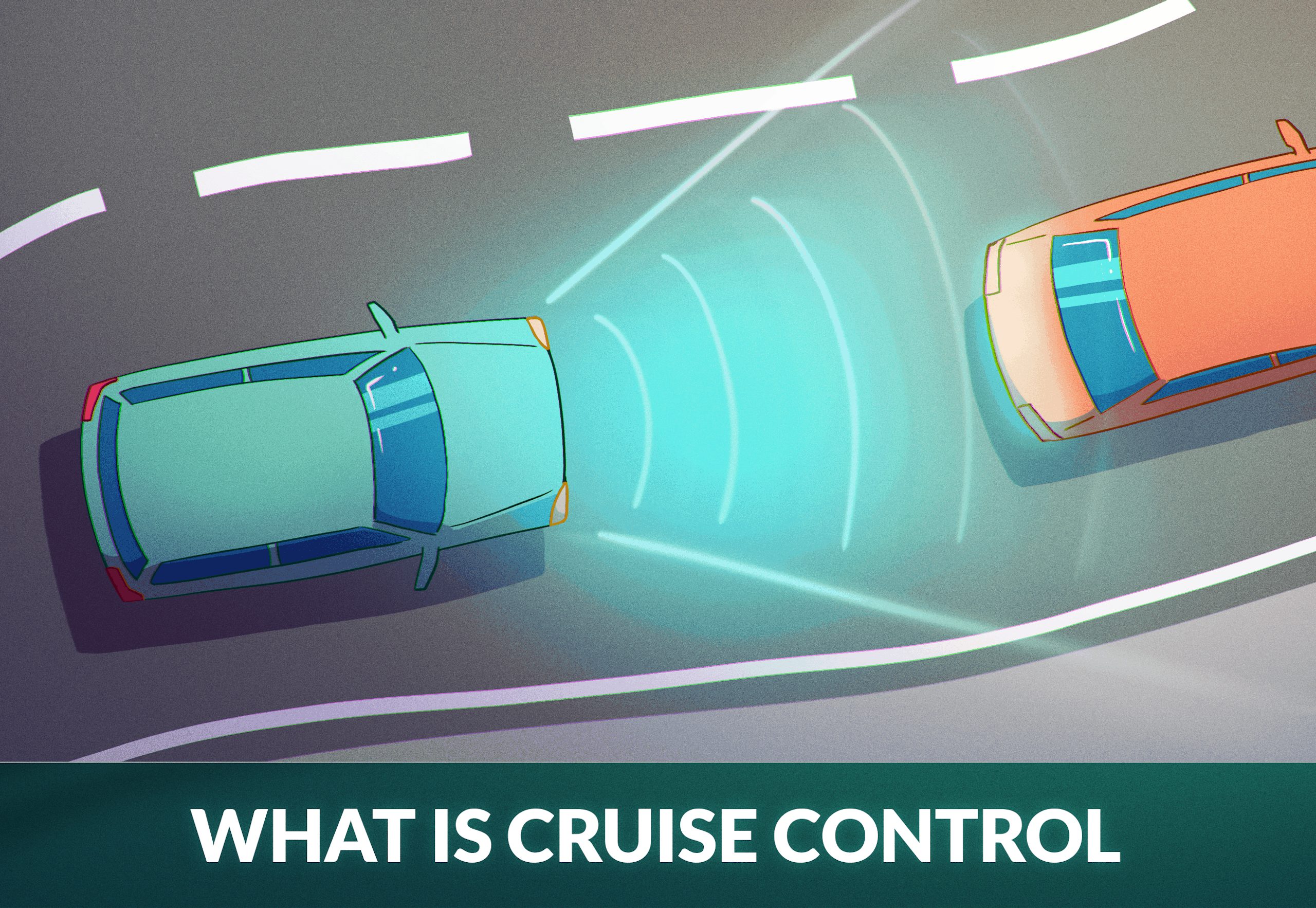
Cruise Control Explained – All You Need to Know
Cruise control has come a long way since first invented and patented by Ralph Teetor in 1950, who originally named it the “Speedostat”. Chrysler Corporation was the first manufacturer to offer the groundbreaking mechanism as an option on several of its luxury vehicle models nine years later. Today, cruise control is rapidly becoming the standard on all new vehicles, providing drivers with increased convenience on their daily drive.
As you’re learning how to operate a vehicle , understanding cruise control will help increase your comfort behind the wheel and knowledge of driving.
What is Cruise Control?
Cruise control is an electronic device within your vehicle that controls the speed of your vehicle. It allows the driver to maintain a constant speed of 25 mph without holding their foot on the accelerator. Although the feature has been around for 70 years, automotive manufacturers continue to improve upon the technology to provide drivers with increased comfort, luxury, and convenience whenever they’re behind the wheel.
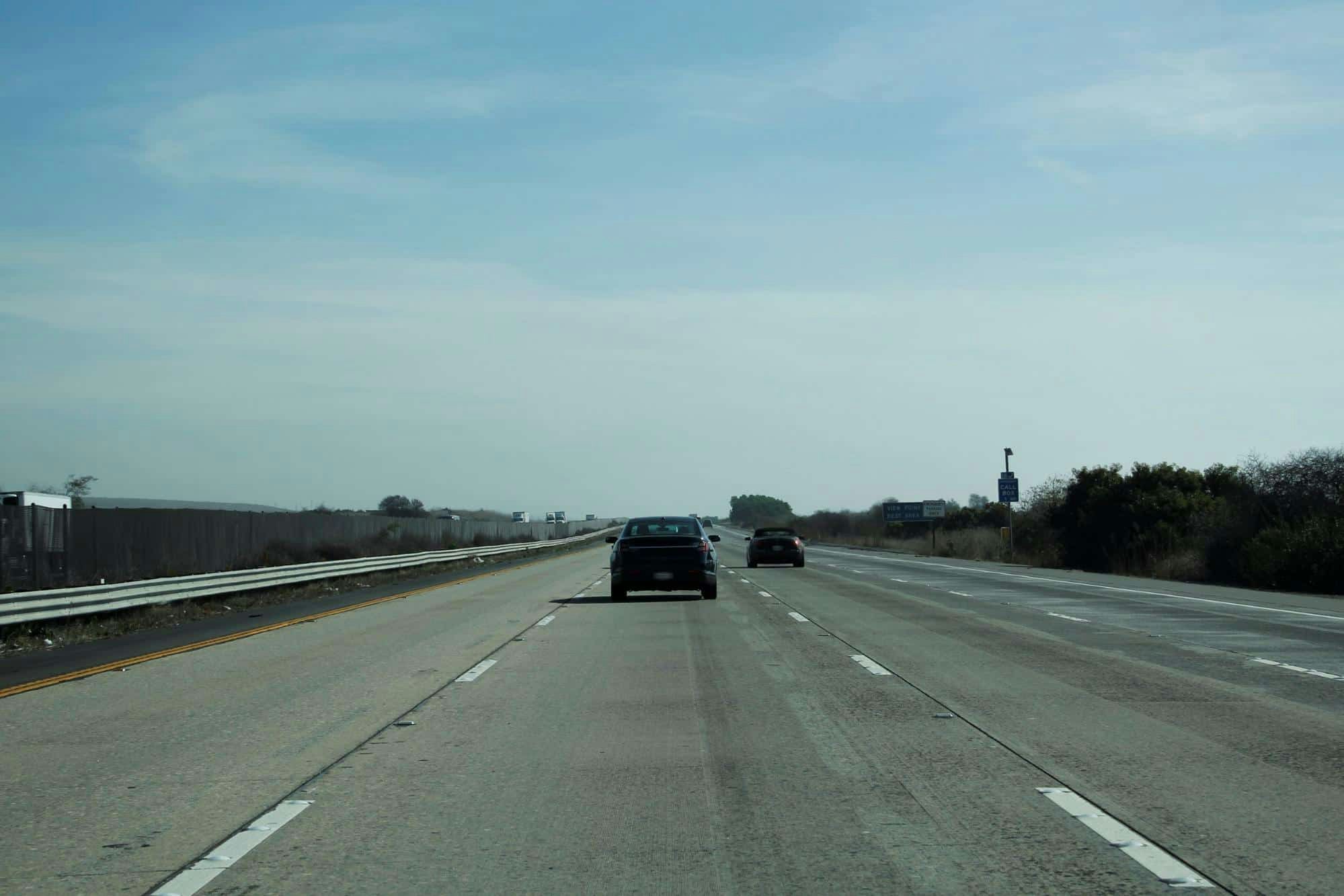
Different Types of Cruise Control
There are 3 types of cruise control systems.
- Speed Limiter
- Adaptive Cruise Control
- Semi-autonomous Cruise Control
What is a Speed Limiter?
A speed limiter will limit how fast the driver can accelerate behind the wheel. All modern vehicles contain a standard speed limiter capping speed between 120 mph and 180 mph depending to protect the vehicle’s engine and discourage reckless driving. However, an additional limiter can be added as an option in many European-made cars, as well as Tesla, Ford, and Nissan. Drivers are still required to keep their foot on the pedal to keep their vehicle in motion, but will not be able to accelerate past a predefined speed limit.
What is Adaptive Cruise Control?
Adaptive cruise c ontrol uses sensors around the vehicle’s exterior to maintain speed while keeping a safe following distance from the car ahead. The system will slow you down and speed you up as the flow of traffic fluctuates throughout your commute, removing a lot of the stress from daily driving. However, adaptive cruise control may not work well in bad weather or protect you from sudden movements, so you will want to always keep your full attention on the road.
What is Semi-autonomous Cruise Control?
Luxury automakers such as Tesla and Audi are implementing the newest rendition of cruise control on their latest vehicle models – Semi-autonomous Cruise Control. It works largely the same as adaptive cruise control, but assists drivers with lane guidance and steering. There are several variations of semi-autonomous cruise control that include additional convenience features for the driver.
How to Use Cruise Control – 6 Step Guide
These are the steps to using cruise control effectively.
- Observe weather conditions
- Build speed
- Engage cruise control
- Set cruise control
- Watch the road and steer
- Brake to disengage
1 – Observe weather conditions
As mentioned, cruise control may become inconsistent in rainy, snowy, or otherwise hazardous conditions. If you must drive in this situation, it may be a better idea to do so manually. Cruise control works best on a clear day with constant traffic flow.

2 – Build speed
Accelerate to your desired speed as you prepare to activate cruise control. US highways have posted speed limits between 55 mph and 75 mph. Do not attempt to set cruise control when you are traveling over the speed limit.
3 – Engage cruise control
Once you’ve reached your desired speed, engage the cruise control. This step will vary widely based on your vehicle make and model, however, many cruise control settings are accessible from the steering wheel controls. Check your owner’s manual for further information.
4 – Set cruise control
After turning on cruise control, you’ll need to set your desired speed. Many systems set the cruise control at the current speed, while others require you to manually set one. You can increase and decrease this speed as needed without interrupting the mechanism.
5 – Watch the road and steer
Watching the road is essential when cruise control is engaged. Cruise control is not a substitute for a human driver and will require supervision at every step. If you are using a semi-autonomous system, you will not need to steer but will need to keep at least one hand on the wheel for safety measures.
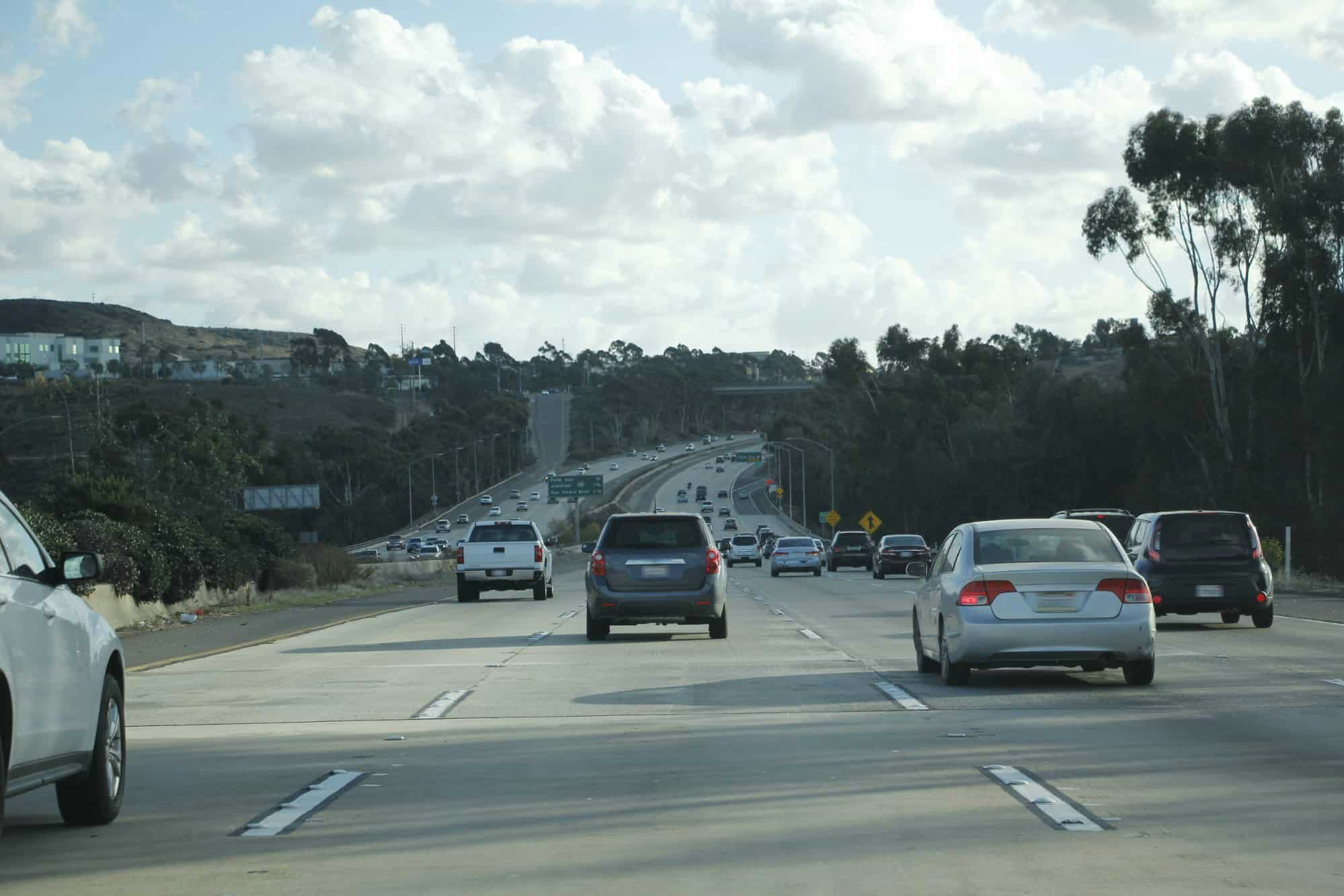
6 – Brake to disengage
When cruise control is no longer needed, or you need to quickly make a maneuver, simply apply pressure to the brakes to disengage the system. Once deactivated, you will be in full control of your vehicle once again.
When NOT to Use Cruise Control
While cruise control is a convenient feature for modern drivers, it is not perfect for all circumstances. In fact, utilizing the system can be quite dangerous if you’re not careful. Be sure not to use cruise control under these conditions.
Heavy Traffic
Heavy, or stop-and-go traffic is not ideal for safely using cruise control. When engaging cruise control on the highway, ensure your lane is clear and there are no vehicles stopping ahead.
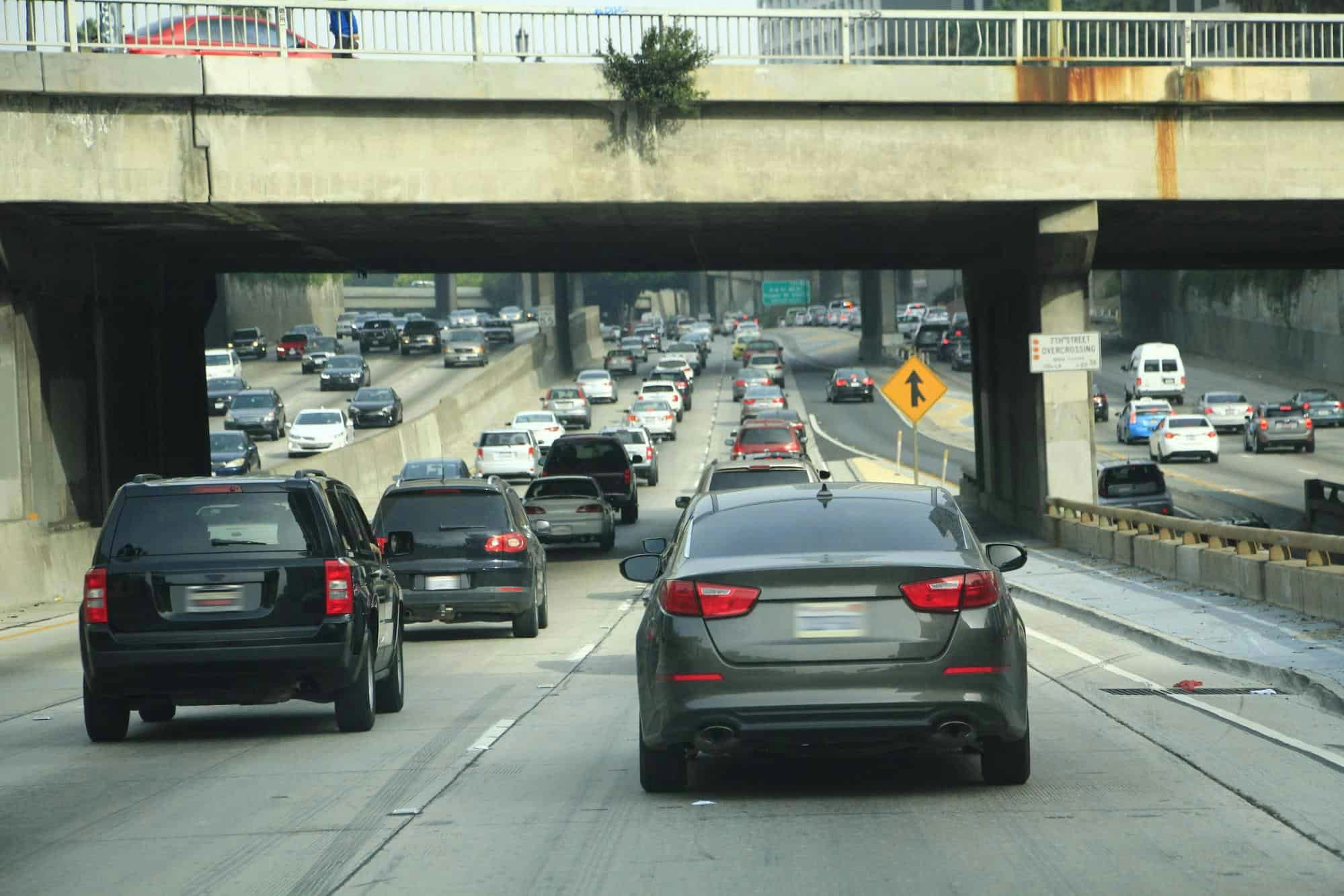
Wet or Icy Conditions
You need to be driving slowly while on wet and icy roads. While cruise control keeps a constant, predetermined speed, it takes away a lot of the manual control needed to stay safe when it’s raining or snowing.
City Driving
While driving through the city, you’ll face a number of stop lights and stop signs that will require manual braking. This action will automatically disengage cruise control.
Winding Roads
Winding roads require more attention than straight, flat streets. Cruise control systems, even adaptable cruise control, may not always detect these streets correctly, causing accidents.
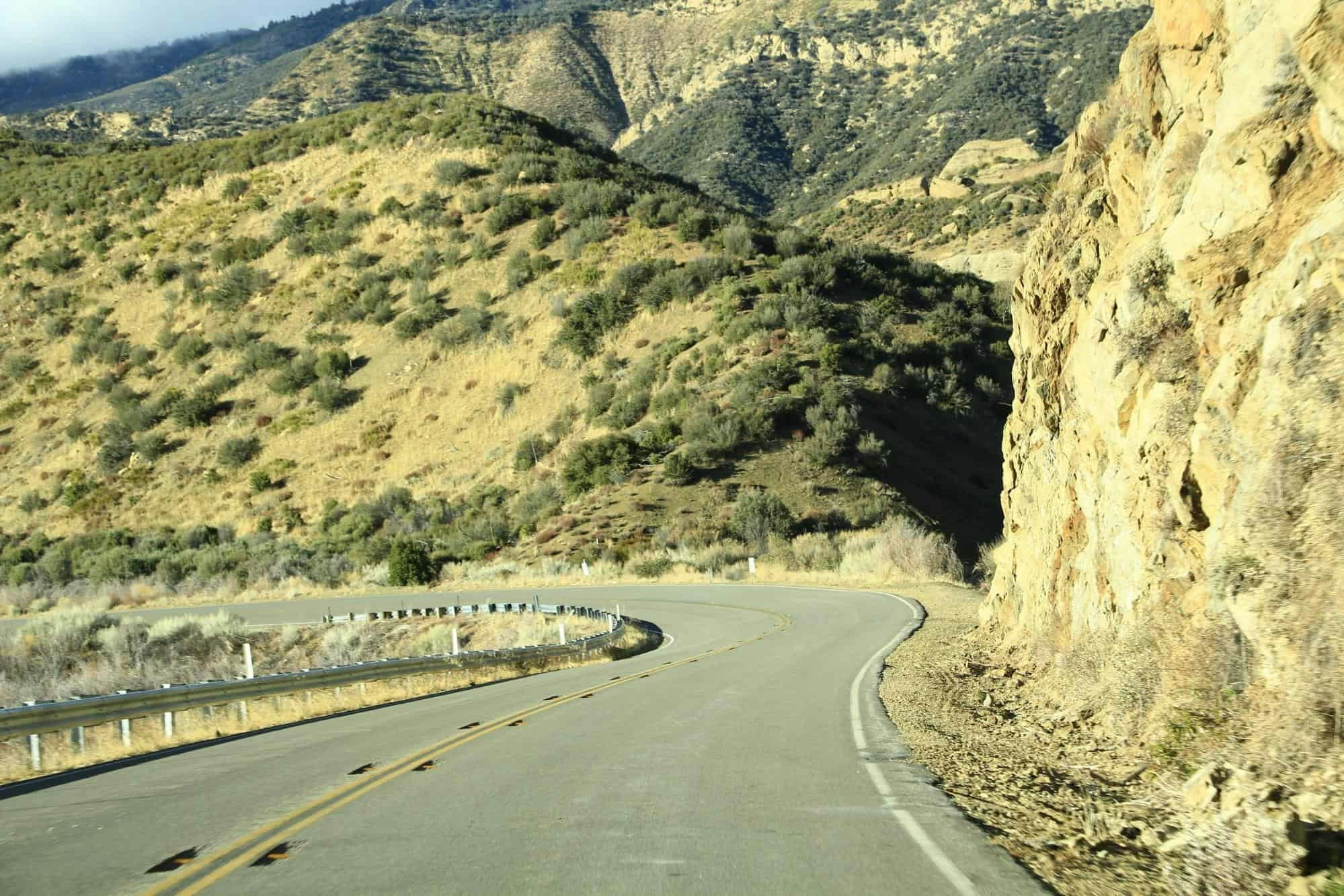
Fatigued Driving
Driving while fatigued is never a good idea, but even less so while using cruise control. Utilizing the system may add to your fatigue, as you give your vehicle more control of the journey. If you’re even the least bit tired, you should never turn on cruise control.
As you can see, cruise control is a great way to relieve much of the stress that comes with everyday driving. The constant rate of speed can also drastically improve fuel efficiency for longer drivers. Cruise control has had a positive impact on the driving industry for 70 years and shows no signs of disappearing anytime soon.

550+ exam-like questions
All you need to ace your test
Perfect for first-timers, renewals and senior citizens
Recommended articles
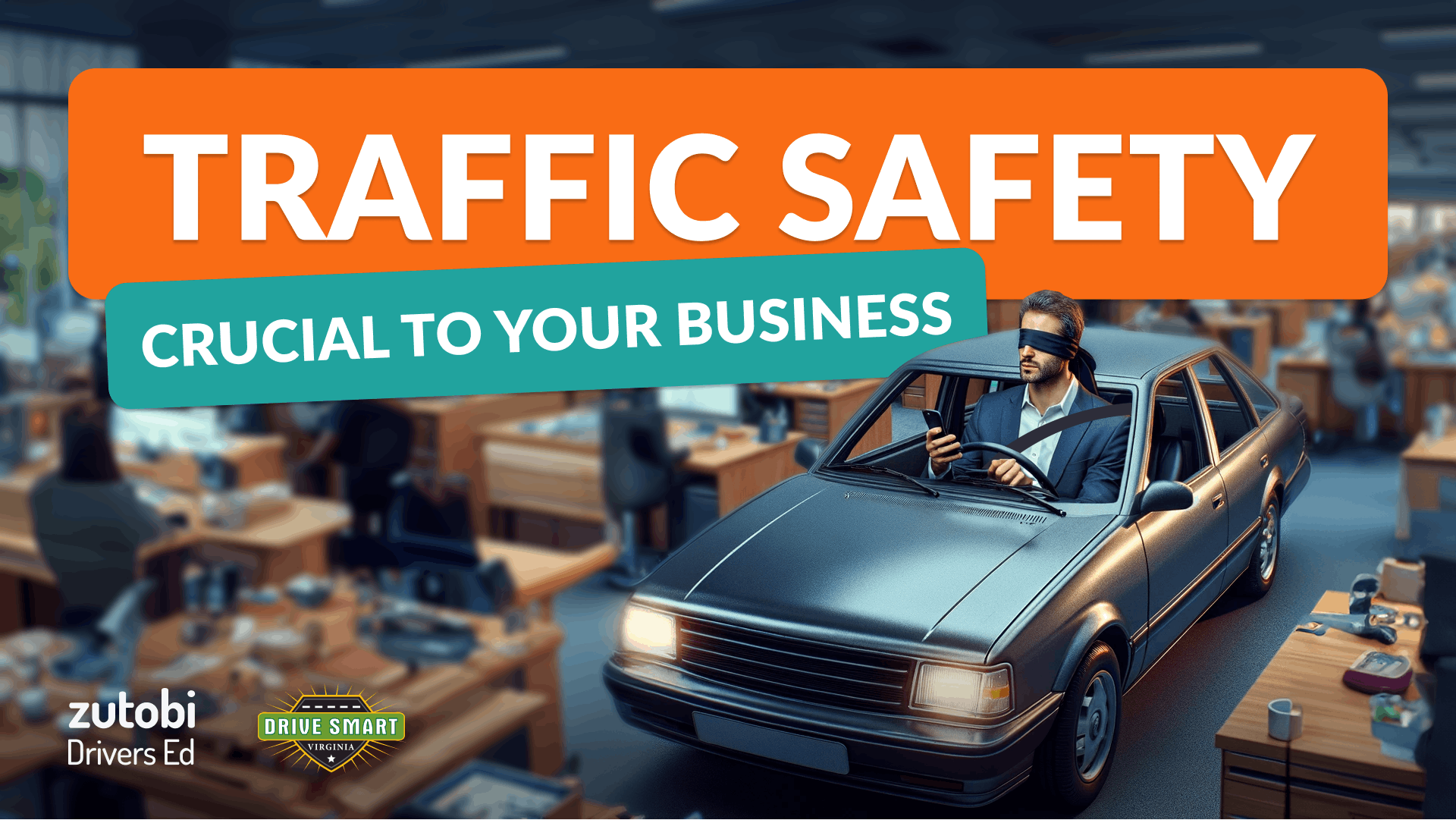
Traffic Safety is Crucial to Your Business
By kristin pettway, drive smart virginia april is distracted driving awareness month and the perfect opportunity for workplaces to review their traffic safety policies and communications. traffic crashes are the leading cause of workplace deaths in america. even if you don’t have a fleet of vehicles, safe driving should still matter to your business. after […].
Cost Effective Cars
The cheapest and most expensive cars to run in the us there are so many different costs to factor in when you buy a new car. from the price of gas, to insurance and vehicle tax rates in your area. in a landscape where consumer prices fluctuate, particularly in areas like vehicle parts, used car […].
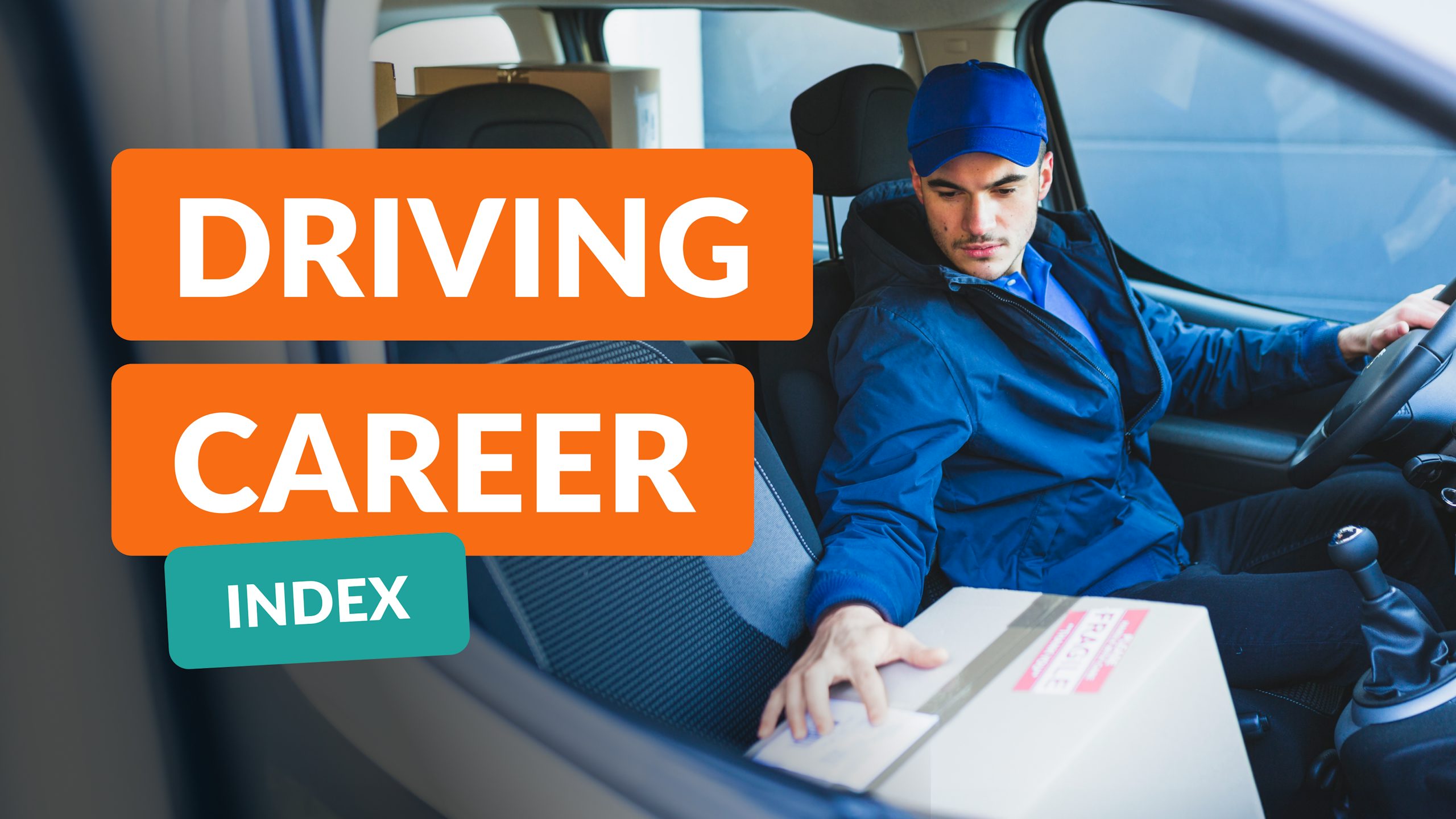
Driving Career Index
A driver’s license opens up numerous job opportunities. but which jobs offer the biggest growth potential with minimal training in this report, zutobi drivers ed analyzed average salary, job availability, employment change rates, and education requirements to identify the top career options for individuals with driver’s licenses. top jobs with the biggest growth opportunities first […].
Ace your DMV test, guaranteed
Get started
Best of the Zutobi blog
- Learner’s Permit Ultimate Guide
- Driving Test Ultimate Guide
- Traffic Lights Guide
- How to Pass the DMV Permit Test
- How to Pass the Driving Test
- Common Reasons For Failing the Road Test
- International Driver’s Permit Guide
- Driver’s License Renewal
- How to Get Your US Driver’s License
- How to Prepare for Your Road Test
- How to Get a Driver’s Permit
- Behind-The-Wheel training
- Terms & conditions
- Privacy policy
- Do Not Sell My Personal Information
- Subscription terms
- Terms & policies
Practice Tests
- Car Practice Tests
- CDL Practice Tests
- Motorcycle Practice Tests

What is Cruise Control and How Does it Function in a Car?

A Quick Overview
Driving on long stretches of highway can be tiring, especially when trying to maintain a constant speed. Cruise control alleviates this by allowing drivers to set and maintain a desired speed without continuous use of the accelerator pedal. Understanding how cruise control functions can help drivers make the most of this convenient feature.
What is Cruise Control?
Cruise control is an automotive feature that enables drivers to set a desired speed for their vehicle. Once activated, the cruise control system maintains the set speed without the need for constant pedal input. It helps drivers maintain a steady pace on long trips, providing convenience and reducing the likelihood of unintentional speed fluctuations.
How Does Cruise Control Function?
Cruise control systems may vary slightly among different vehicle models, but they generally function using the following components and controls:
1. Set Button
To activate cruise control, the driver typically presses a “Set” button or engages a switch on the steering wheel or dashboard. This action captures the current speed of the vehicle and sets it as the target speed for the cruise control system to maintain.
2. Speed Control
Once the cruise control system is activated, the driver can adjust the speed using speed control buttons. These buttons allow the driver to increase or decrease the set speed in small increments. By pressing the appropriate button, the driver can fine-tune the desired speed for their comfort and road conditions.
3. Resume Button
The “Resume” button, also known as the “Accel” button, allows the driver to restore the previously set speed after it has been canceled or temporarily interrupted. When the driver presses the “Resume” button, the cruise control system accelerates the vehicle to the previously set speed.
4. Cancel Button
The “Cancel” button, often marked with the symbol “CRUISE” or “OFF,” deactivates the cruise control system. Pressing this button disengages the system and allows the driver to regain full control over acceleration and braking. It is important to note that the brake pedal can also automatically deactivate cruise control when pressed.
Advantages of Cruise Control
Cruise control offers several advantages to drivers:
- Reduced Driver Fatigue: Cruise control allows drivers to maintain a steady speed without continuously pressing the accelerator pedal, reducing fatigue on long drives.
- Improved Fuel Efficiency: By maintaining a consistent speed, cruise control can help optimize fuel efficiency by reducing unnecessary acceleration and deceleration.
- Avoiding Speeding: Cruise control helps drivers adhere to speed limits by maintaining a set speed, preventing unintentional speeding due to variations in foot pressure on the accelerator pedal.
Limitations of Cruise Control
While cruise control provides convenience, there are limitations to consider:
- Traffic and Safety: Cruise control should be used only in appropriate situations. It is important to remain vigilant and be ready to take control of the vehicle when necessary, such as in heavy traffic or hazardous road conditions.
- Hilly Terrain: Cruise control may struggle to maintain a constant speed on hilly terrain, as it cannot anticipate changes in elevation. In such situations, the driver may need to manually intervene and adjust the speed accordingly.
👉 You may also like - A Deep Dive into the Adaptive Cruise Control System. What Is It?
What is cruise control?
Cruise control is a technology in cars that allows drivers to maintain a constant speed without keeping their foot on the accelerator. The feature is commonly used during long drives on highways or other open roads.
How does cruise control work?
When cruise control is activated, the driver sets a desired speed for the car to maintain. The car’s engine and transmission work together to maintain that speed without any input from the driver.
Is it safe to use cruise control while driving?
Yes, cruise control is generally safe to use while driving. However, drivers should remain attentive and ready to take control of the car at any moment. It’s also important to note that cruise control should not be used in hazardous weather or road conditions.
What are the benefits of using cruise control?
Using cruise control can improve fuel efficiency by helping drivers maintain a consistent speed and reduce unnecessary acceleration. It can also reduce driver fatigue during long drives by allowing them to rest their feet.
Can all cars have cruise control installed?
Not all cars come with cruise control as a standard feature, but many newer cars do have this option available. Additionally, aftermarket cruise control systems can be installed on most cars.
Can cruise control be dangerous?
Cruise control can become dangerous if the driver becomes too reliant on it and fails to remain attentive. Additionally, using cruise control in hazardous conditions, such as heavy traffic or inclement weather, can be dangerous.
Does cruise control work on manual transmission cars?
Cruise control can be installed on manual transmission cars, but it requires a more advanced system than the one used for automatic transmissions. Manual transmission cruise control systems are typically more expensive and less common.
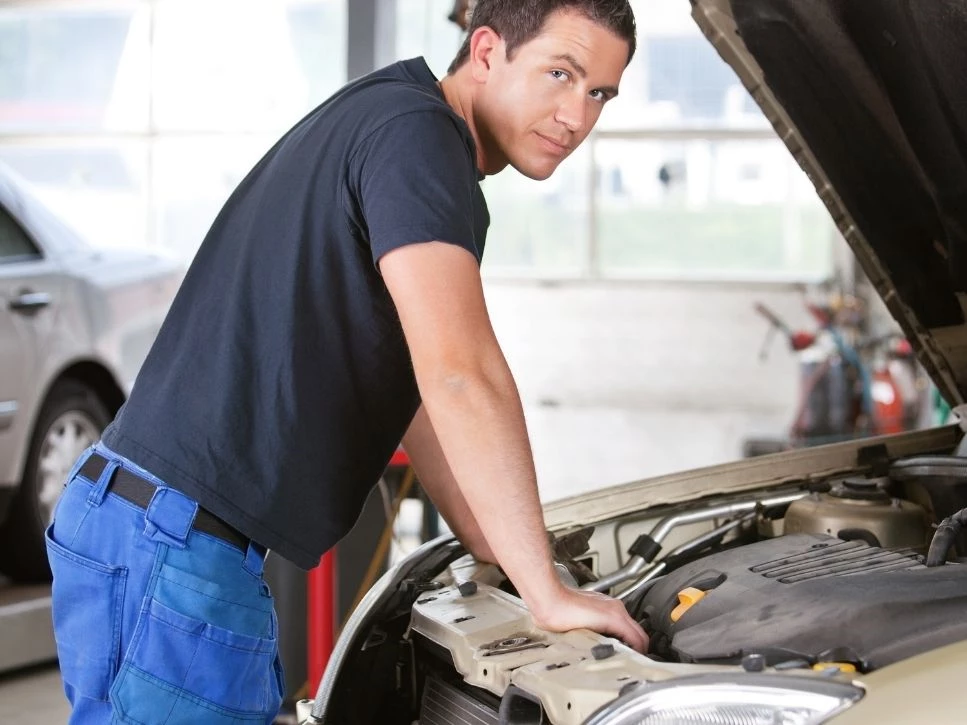
Is Bypassing the Crank Position Sensor Possible? Here's How
A guide to wiring 1, 2, 3, 4 wire oxygen sensors. detailed diagrams.
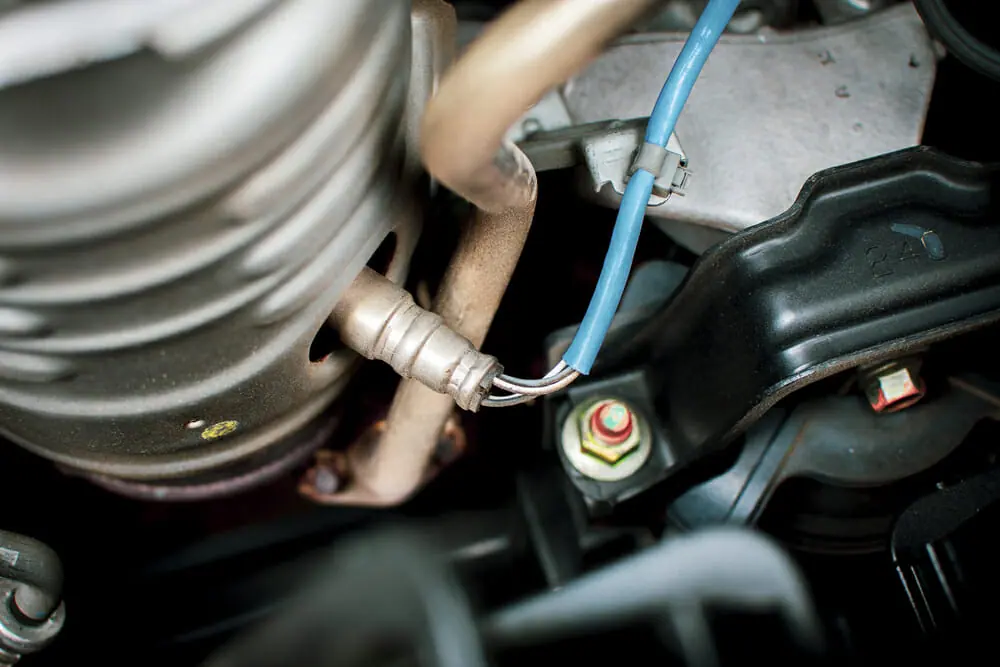
Mastering ASE Testing - The Ultimate Guide for Success

Keeping Current - Charging System Diagnosis and Repair
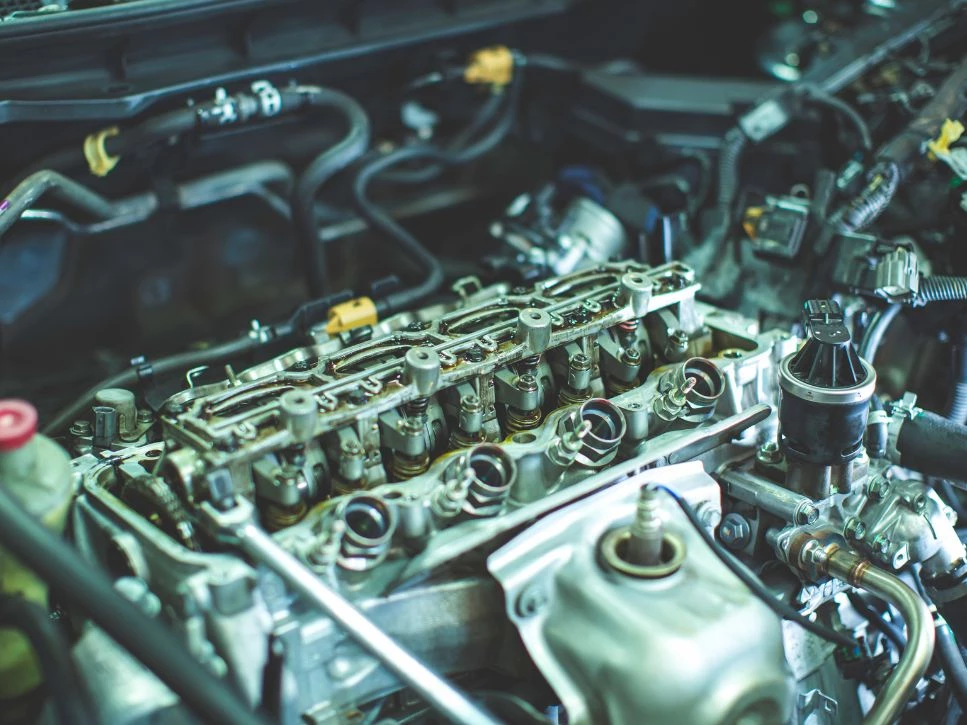
The complete ASE practice test with answers and explanations
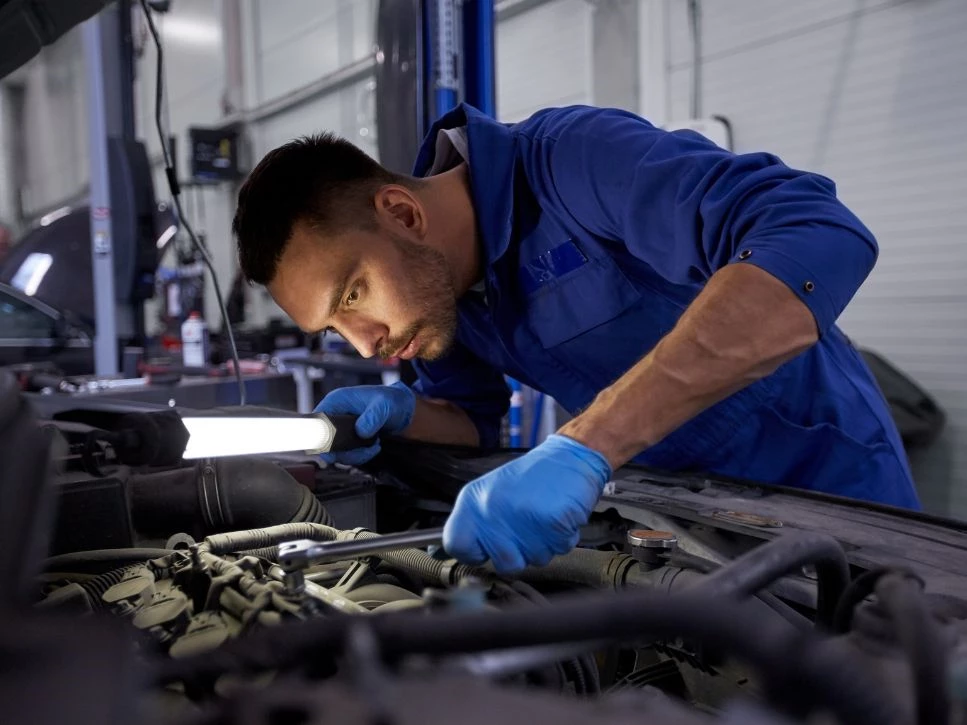
Enhancing the Ride - Accessories Diagnosis and Repair

What Is Cruise Control In A Car and How It Works
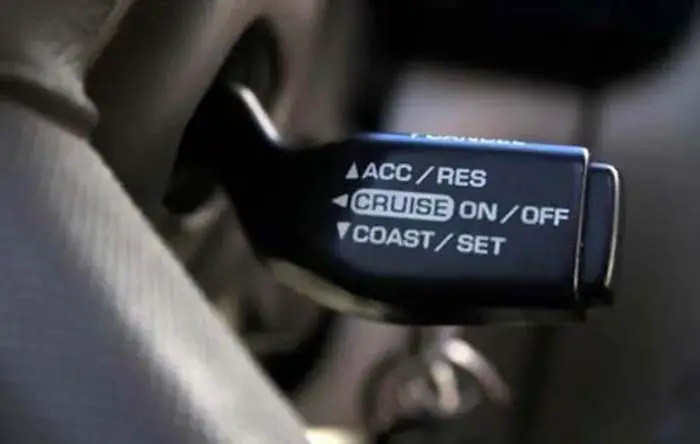
According to the research , cruise control reduces the mental workload of the driver. It reduces fatigue and increases the comfort of driving a long distance. It is also good to avoid speed violations and resists the temptation to speed up the car.
Although cruise control can be a great help on long trips by maintaining a consistent speed and freeing up the driver’s hands, it is important to remember that it is not a replacement for a driver’s attention and care. Drivers must still be vigilant in paying attention to the road and their surroundings, and be prepared to take over control of the vehicle if necessary. Additionally, drivers should periodically check the vehicle’s speed to ensure that it is still within the desired range.
Fortunately, on this page, you can learn everything you need to know about cruise control. In this powerful article, you are going to quickly learn what cruise control is in a car.
Related Post: Advantages & Disadvantages Of Adaptive Cruise Control
What Is Cruise Control In Vehicle
Cruise Control also known as speed control or auto cruise is a system that allows you to keep the car at a constant speed without holding your foot on the accelerator pedal. Technically, it is an electronic feature that reprograms the car’s setting to keep the car at a constant speed regardless of pressing and holding the foot on the accelerator pedal.
This cruise control is a kind of driving on auto-pilot mode. It automatically controls the car’s steady speed by taking the control of the throttle body. It comes in cars having a drive-by-wire system where an electronically controlled throttle body is manipulated by a cruise control computer. The cruise control computer is a small computer that you can fit under the hood or in the cabin behind the dashboard.
Related Post: Does Cruise Control Save Gas? | Confused!? Here’s A Comprehensive & Detailed Guide
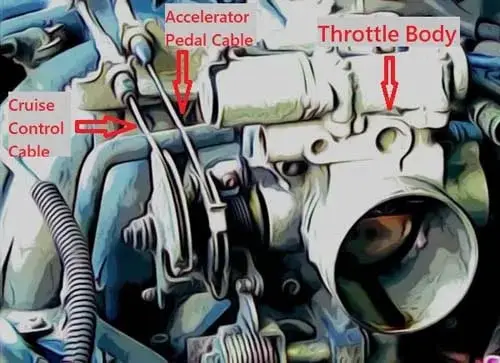
In the early mechanical linkage throttle body, two cables are used for operating the cruise control, one cable goes to the accelerator pedal, and the second cable goes to the vacuum actuator to operate the throttle body for cruise control.
This vacuum actuator also pulls the cable connected to the accelerator pedal and actuates the throttle butterfly valve. Modern cruise control systems have a memory feature which means, it remembers the last time the cruise control system was canceled.
You can resume the previously canceled speed by tapping on the RES button. With the activated cruise control system, you can override the speed of the car by pressing the accelerator pedal. But once, you take the foot off the accelerator pedal, the cruise control reduces the speed until it reaches the last SET speed.
This is an Alert Some cars do not engage the cruise system below a certain speed, typically less than 40 km/h or 25 mph.
Related Post: The Ultimate Guide To Cruise Control Symbol & Adaptive Cruise Control Symbol
Frequently Asked Questions (FAQs)
The purpose of cruise control is to maintain a constant speed by automatically adjusting the throttle. This can be beneficial for the driver, as it reduces the need to repeatedly adjust the accelerator pedal. Additionally, it may help to improve fuel efficiency and emissions by reducing the amount of time the engine spends idling. However, cruise control is not without its drawbacks – it can lead to overuse of the brakes and increased wear on the tires, and it may not be suitable for all road conditions.
The cruise control feature on a car does not drain the battery. This is because the cruise control system is not continuously running when engaged, but rather it only activates when the car is traveling at a consistent speed. When activated, the cruise control system will automatically adjust the throttle and brakes to maintain a set speed, which takes very little power from the battery. Therefore, engaging the cruise control feature will not cause your car’s battery to drain any faster than if you were driving without it.
About The Author
Related Posts
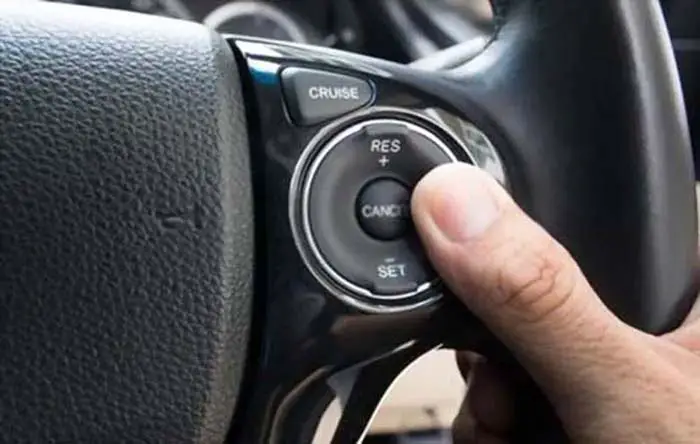
How To Turn OFF Cruise Control, When To Use It & When Not
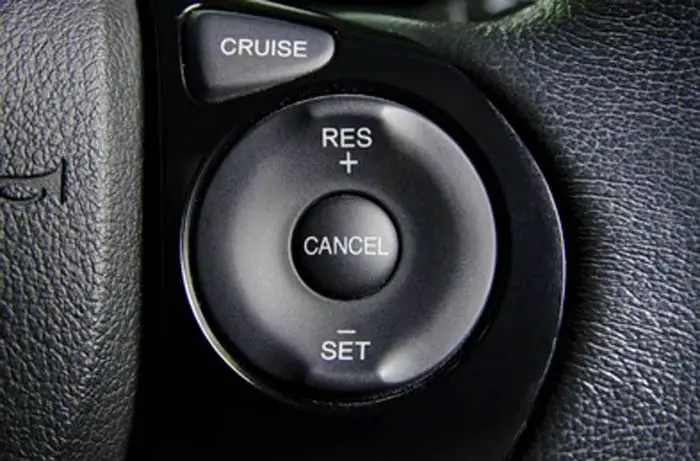
How Does Cruise Control Work: We Have The Best Answer
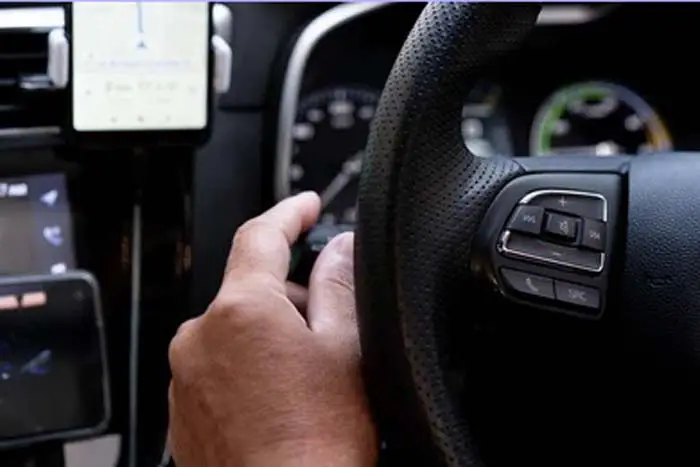
Advantages & Disadvantages Of Adaptive Cruise Control
Leave a comment cancel reply.
Your email address will not be published. Required fields are marked *
Save my name, email, and website in this browser for the next time I comment.
- What's My Car Worth?
- Buyer's Guide
What Is Adaptive Cruise Control?
Adaptive cruise control (ACC) is a system designed to help road vehicles maintain a safe following distance and stay within the speed limit. This system adjusts a car's speed automatically so drivers don't have to.

Adaptive cruise control (ACC) is a system designed to help vehicles maintain a safe following distance and stay within the speed limit. This system adjusts a car's speed automatically so drivers don't have to.
Adaptive cruise control is one of 20 terms used to describe its functions so that you might see adaptive cruise control as the following in advertisements and vehicle descriptions:
- Active cruise control
- Dynamic cruise control
- Radar cruise control
- Automatic cruise control
- Intelligent cruise control
ACC functions by sensory technology installed within vehicles such as cameras, lasers, and radar equipment, which creates an idea of how close one car is to another, or other objects on the roadway. For this reason, ACC is the basis for future car intelligence.
These sensory technologies allow the car to detect and warn the driver about potential forward collisions. When this happens, red lights begin to flash, and the phrase 'brake now!' appears on the dashboard to help the driver slow down. There might also be an audible warning.

Advantages of Adaptive Cruise Control
Limitations of adaptive cruise control.
Although there are many advantages to adaptive cruise control, there are still limitations to consider. One of the main faults in this system is the fact that it is not entirely autonomous. The driver of the vehicle still needs to practice safe driving habits that will work in tandem with this technology to produce the best results. Similarly, adverse weather conditions like snow, rain, or fog might confuse the system's sensors, as well as environmental factors such as driving through tunnels.
What Is the Difference Between a Level 1 Autonomous Car and a Level 2 Autonomous Car?
According to SAE International, when a car only has autonomous cruise control , it is considered to be a level 1 autonomous car. In contrast, a vehicle with autonomous cruise control and an additional feature, such as lane control, gets classified as a level 2 autonomous car.
How Much Does an Adaptive Cruise Control System Cost?
According to ExtremeTech, The cost of an adaptive cruise control system will vary depending on how many features you want. If you're going to have an ACC with all available features, you should be willing to pay anywhere between $2000 and $2500. If you are looking for minimal cruise control that would benefit speeds of up to 20-25 miles per hour, these more basic ACCs can cost as low as $500. The good news is that as ACC becomes more common, it will most likely reduce in price.
History of Adaptive Cruise Control
U.S. News says Mitsubishi first introduced adaptive cruise control in Japan in 1992 . This was a lidar-based distance detection system that detected objects that were getting too close. It was labeled as 'Debonair' and it was programmed to provide a warning to the driver about oncoming objects. The main difference was that it was the driver's job to apply the brakes and reduce their speed.
However, two years later in 1995, the Mitsubishi Diamante featured an upgraded approach to the Debonair called 'Preview Distance Control.' Unlike the original technology, this laser-powered system could adjust a driver's speed by downshifting or controlling the throttle. The driver was still responsible for applying the brakes.
From the early 2000s onward, big names in the car industry, such as Ford, BMW, Mercedes, Cadillac, Volkswagen, Infinity, Hyundai, Toyota, and Audi, created their versions of adaptive cruise control in their vehicles. These individual features have evolved into a high-tech system with automatic braking and speed control.
Types of Adaptive Cruise Control
Radar-based systems.
According to eInfoChips, radar-based systems work by placing radar-based sensors on or around plastic fascias to detect your vehicle's surroundings. Each radar sensor works together to create a comprehensive picture of the vehicle's proximity to other cars or potentially hazardous objects. This type of sensor can look different depending on the design and model of the car.
Laser-Based Systems
As mentioned by Electronic Design , this type of ACC system operates out of a large black box typically placed in the grille of your vehicle. It uses laser technology to detect the proximity of objects to your car. It does not operate well during rainstorms and other weather conditions.
Binocular Computer Vision Systems (Optical)
According to ExtremeTech, this is a relatively new ACC system put into use in 2013. It uses small cameras that are placed on the back of a vehicle's rearview mirror to detect front-facing objects.
Assisting Systems
Assisting systems are radar-based add-ons that customers can buy together. These pre-crash systems can offer lane control, brake assistance, cruise control, proximity alerts to objects like corners, and steering power.
Multi-Sensor Systems
According to Fierce Electronics , adaptive cruise control systems sometimes integrate more than one type of sensor to aid in a vehicle's operation. Multi-sensor systems incorporate several different sensor types to provide a driver with advanced information. These sensors might include GPS data equipment or cameras to gather information about a vehicle's geographic environment and proximity to other cars.
Predictive Systems
As mentioned by Autoblog, prediction systems are a type of ACC that uses sensory data to predict the actions of neighboring vehicles. This means that your car might slow down to brace for another vehicle suddenly switching lanes and, in doing so, promotes passenger safety.
Adaptive cruise control is evolving each year. Car companies are continuously making adjustments to this technology and, in doing so, creating more common and affordable options that can be purchased with a new car or added to older car models, making driving safer for everyday people.
Information and research in this article verified by ASE-certified Master Technician Keith Canete of YourMechanic.com . For any feedback or correction requests please contact us at [email protected] .
https://www.einfochips.com/blog/why-automotive-companies-should-adopt-radar-based-adas-systems/
https://www.electronicdesign.com/markets/automotive/article/21797633/adaptive-cruise-control-laser-diodes-as-an-alternative-to-millimeterwave-radars
https://www.autoblog.com/2015/01/14/new-honda-smart-cruise-control-predicts-other-motorists-future/
https://www.fierceelectronics.com/components/three-sensor-types-drive-autonomous-vehicles
https://www.extremetech.com/extreme/157172-what-is-adaptive-cruise-control-and-how-does-it-work
https://mycardoeswhat.org/safety-features/adaptive-cruise-control/
https://cars.usnews.com/cars-trucks/what-is-adaptive-cruise-control
https://www.caranddriver.com/features/columns/
https://www.sae.org/
.css-190qir1:before{background-color:#000000;color:#fff;left:0;width:50%;border:0 solid transparent;bottom:48%;height:0.125rem;content:'';position:absolute;z-index:-10;} Research .css-188buow:after{background-color:#000000;color:#fff;right:0;width:50%;border:0 solid transparent;bottom:48%;height:0.125rem;content:'';position:absolute;z-index:-10;}

Tundra vs. Tacoma: Comparing Toyota Pickup Trucks

Honda HR-V vs. CR-V: Examining the Differences
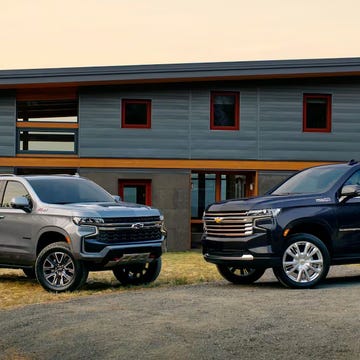
Chevy Tahoe vs. Suburban: Here Are the Differences
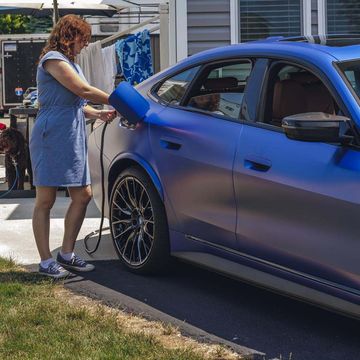
What Are the Different EV Charging Levels?
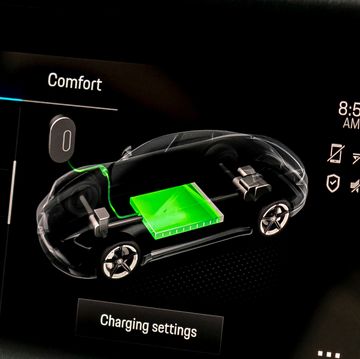
Electric Car Battery Life
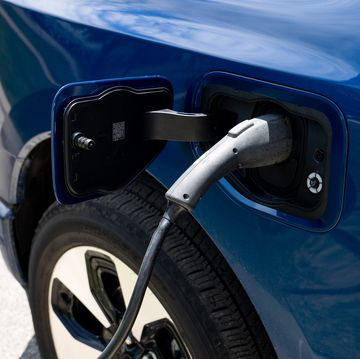
Electric Cars vs. Gas Cars: Pros and Cons

How to Clean Leather Car Seats
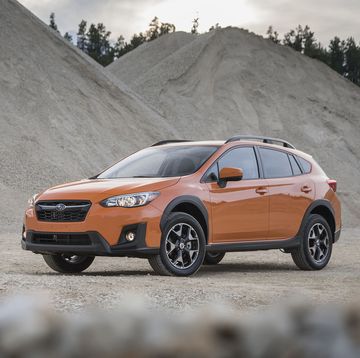
What to Buy: Subaru Crosstrek or Subaru Forester?

What to Buy: Jeep Cherokee or Jeep Grand Cherokee?
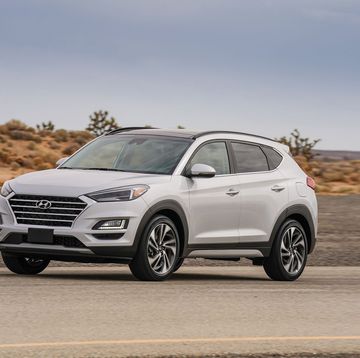
What to Buy: Hyundai Tucson or Hyundai Santa Fe?
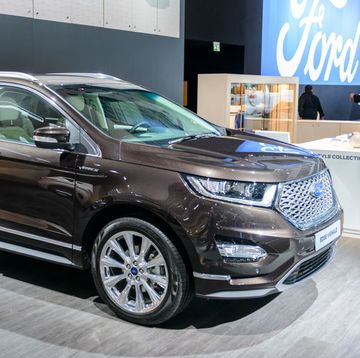
2019 and 2020 Ford Edge Colors
- Cambridge Dictionary +Plus
Meaning of cruise control in English
Your browser doesn't support HTML5 audio
- Having just done the trip in my new car with cruise control , I have to say that it was much less tiring .
- Cruise controls have a switch to toggle them off when you touch the brake pedal .
- A four-wheel drive vehicle that was stuck in cruise control at 80 km/h took its driver on a terrifying drive for more than 50 kilometres .
- I don't even notice I'm running ; it's like being in cruise control .
- On the new album , their second full-length collaboration , the two are once again on cruise control .
- biting point
- carburation
- carburettor
- combustion chamber
- distributor
- drive shaft
- internal combustion engine
You can also find related words, phrases, and synonyms in the topics:
Examples of cruise control
Translations of cruise control.
Get a quick, free translation!

Word of the Day
balancing act
a difficult situation in which someone has to try to give equal amounts of importance, time, attention, etc. to two or more different things at the same time

Binding, nailing, and gluing: talking about fastening things together

Learn more with +Plus
- Recent and Recommended {{#preferredDictionaries}} {{name}} {{/preferredDictionaries}}
- Definitions Clear explanations of natural written and spoken English English Learner’s Dictionary Essential British English Essential American English
- Grammar and thesaurus Usage explanations of natural written and spoken English Grammar Thesaurus
- Pronunciation British and American pronunciations with audio English Pronunciation
- English–Chinese (Simplified) Chinese (Simplified)–English
- English–Chinese (Traditional) Chinese (Traditional)–English
- English–Dutch Dutch–English
- English–French French–English
- English–German German–English
- English–Indonesian Indonesian–English
- English–Italian Italian–English
- English–Japanese Japanese–English
- English–Norwegian Norwegian–English
- English–Polish Polish–English
- English–Portuguese Portuguese–English
- English–Spanish Spanish–English
- English–Swedish Swedish–English
- Dictionary +Plus Word Lists
- English Noun
- Translations
- All translations
Add cruise control to one of your lists below, or create a new one.
{{message}}
Something went wrong.
There was a problem sending your report.

- Cars for Sale
- Research & Reviews
- News & Videos
- Sell Your Car
- Sign in with Google
- Sign in with Facebook
- Sign in with Apple
What Is Adaptive Cruise Control?
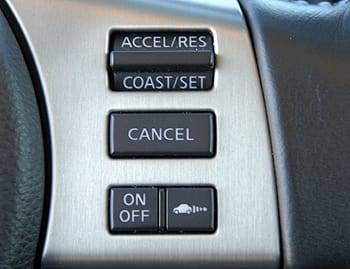
By Rick Popely
Like regular cruise control systems that have been around for decades, adaptive cruise control keeps a vehicle cruising at a set speed selected by the driver. The system also maintains a set distance from the car ahead and can slow or, in some models, stop a vehicle.
Adaptive cruise control first appeared in the U.S. in the 1999 Mercedes-Benz S-Class and now is widely available on lower-priced vehicles as well as luxury models.
Related: Which Cars Have Self-Driving Features for 2021?
Carmakers identify their systems with different names such as Distronic, Dynamic Cruise Control, Smart Cruise Control and Intelligent Cruise Control, but all of the systems use radar and cameras to monitor the road ahead. With ACC, the driver can select a cruising speed and a distance to be maintained from a vehicle ahead in the same lane, usually with a choice of short, medium or long intervals.
If the road ahead is clear, the vehicle will cruise at the selected speed, but if a vehicle comes within the set range, ACC will reduce engine power and, in some cases, apply the brakes to maintain the set distance. ACC will accelerate back to the set speed once the vehicle ahead speeds up or moves out of the way.
Differences Between Systems
More advanced ACC systems offered by some manufacturers include a stop-and-go feature that can bring the vehicle to a stop without canceling the cruise control. Some will then accelerate automatically if traffic ahead starts moving in less than three seconds, though that can vary by automaker. If the vehicle remains stopped for more than three seconds, the driver typically has to tap the accelerator or press the cruise control resume switch to get going.
Other ACC systems will cancel the settings if the vehicle drops below a certain speed, and the driver will have to manually accelerate and reset the ACC.
The speed at which ACC can be engaged also varies by manufacturer, with some allowing it to operate at less than 15 mph and others requiring 25 mph or faster. (Information on how a specific system operates can be found in a vehicle’s owner’s manual.)
Like regular cruise control, ACC can typically be canceled by tapping the brake pedal or the cancel switch on the steering-wheel controls. The driver also can operate in regular cruise without using the distance setting.
When paired with lane keep assist, which keeps the vehicle centered in the lanes, a vehicle with ACC is in Level 2 of the autonomous driving protocols because the vehicle can control some acceleration, braking and steering functions.
Safety Implications
The Insurance Institute for Highway Safety and others, including vehicle manufacturers , warn that ACC has limitations and that drivers should always keep their hands on the steering wheel and eyes on the road at all times when using ACC.
Among the limitations are reduced capability in rain and snow or if the cameras or sensors are obscured. Also, the sensors don’t recognize stop signs or traffic signals; they may not be able to detect motorcycles, bicycles, animals or stopped vehicles; and they are less capable on winding roads.
Researchers have found that using ACC and lane keep assist can lull drivers into a false sense of security and reduce attentiveness , which can lead to accidents. However, an IIHS study of 2013-2017 BMW models found that vehicles equipped with ACC and other so-called advanced driver-assistance systems had significantly fewer insurance claims for property damage and injuries. Collision claims were lower by 6%, property damage claims by 27% and bodily injury claims by 37%. The study did not say how much of the reductions were due to ACC, however.
More From Cars.com:
- Which Cars Have Self-Driving Features for 2020?
- Which Cars Have Self-Driving Features for 2019?
- More Self-Driving Car Coverage
- Find Your Next Car
Cars.com’s Editorial department is your source for automotive news and reviews. In line with Cars.com’s long-standing ethics policy, editors and reviewers don’t accept gifts or free trips from automakers. The Editorial department is independent of Cars.com’s advertising, sales and sponsored content departments.
Latest news
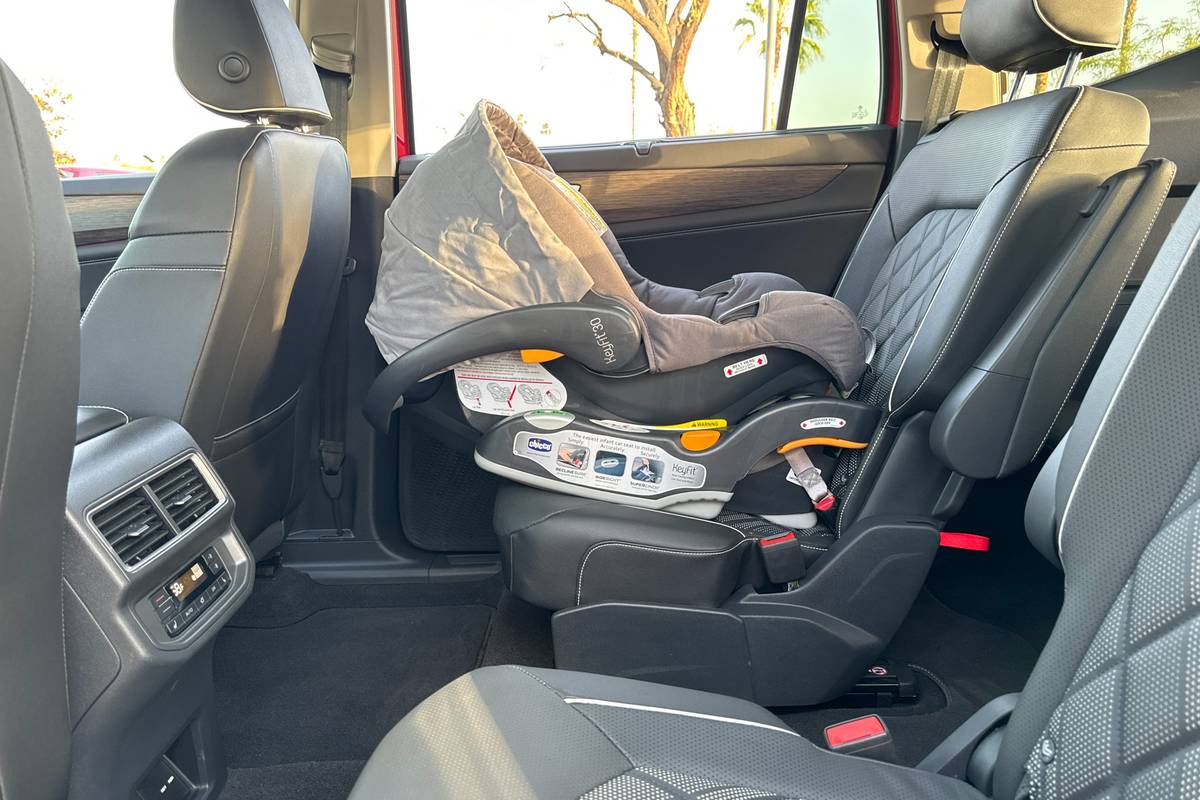
How Do Car Seats Fit in a 2024 Volkswagen Atlas?
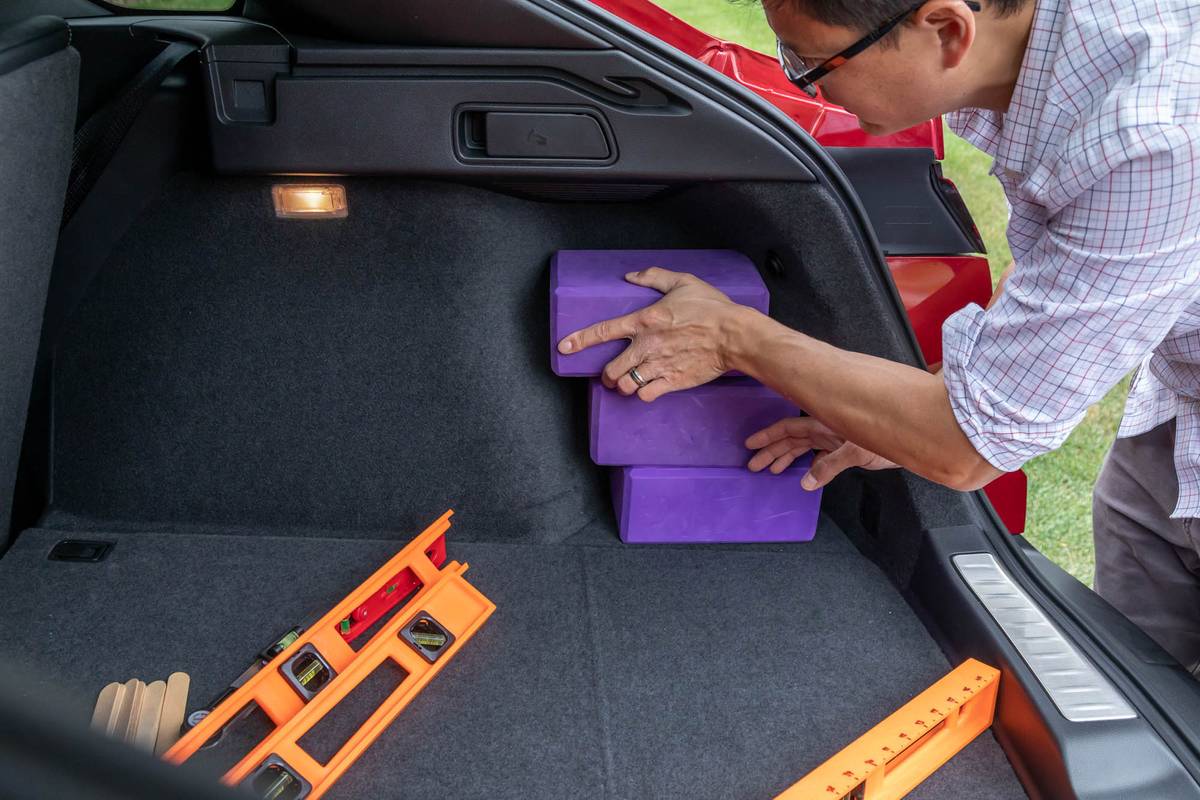
Which SUVs, Minivans and Sedans Have the Most Cargo Space?
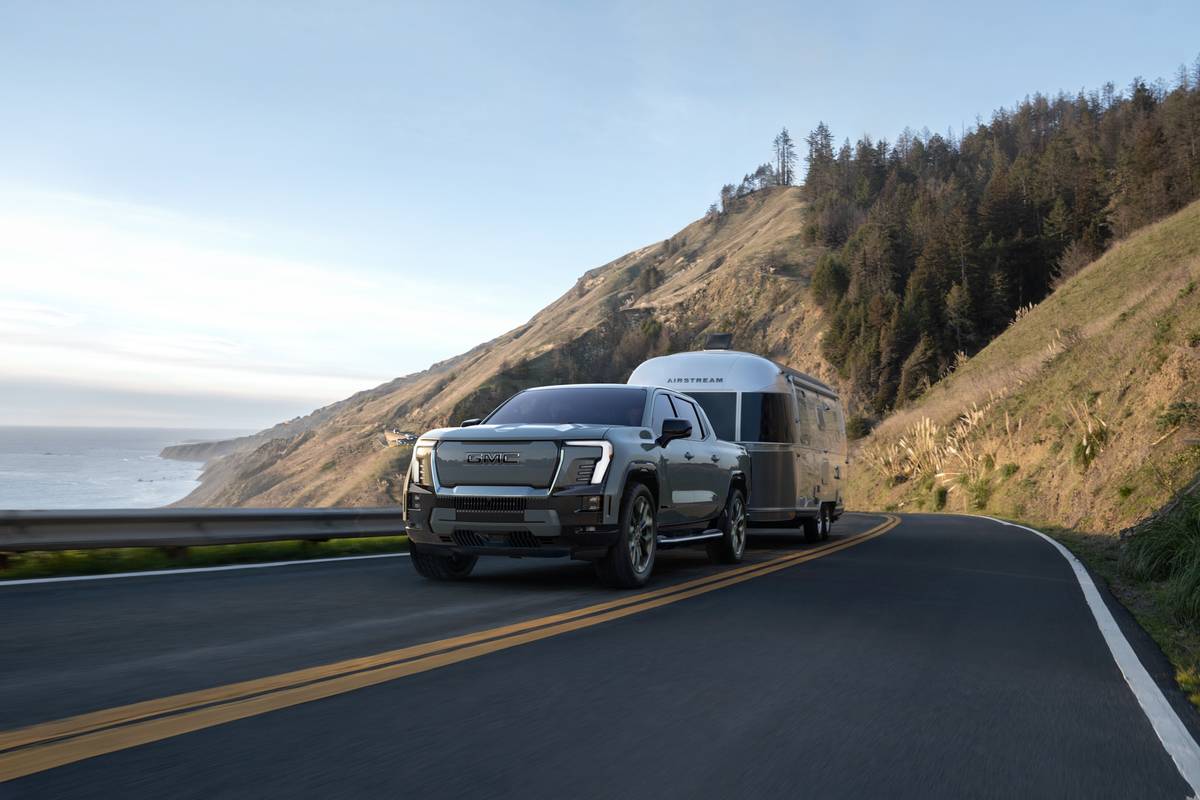
2024 GMC Sierra EV Denali Edition 1 Gets More Range for Fewer Dollars
Featured stories.
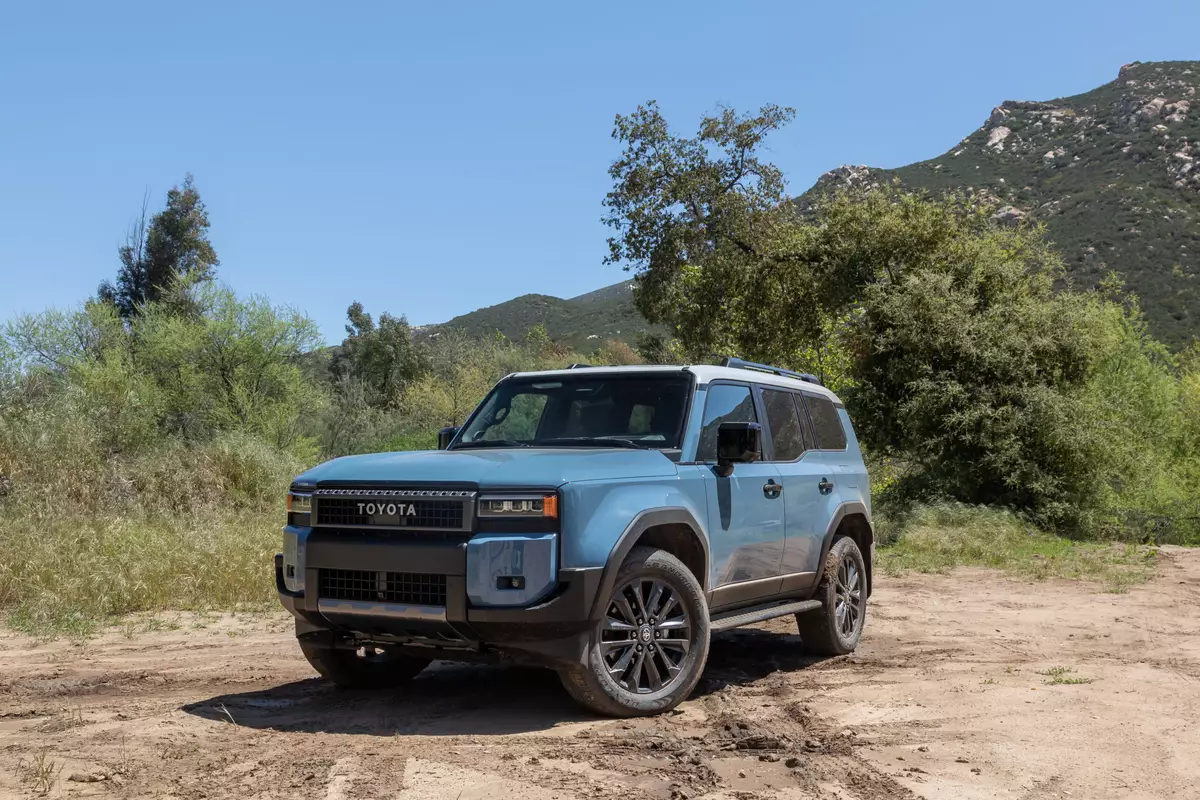
2024 Toyota Land Cruiser Review: Readjust Your Expectations

2024 Honda Ridgeline Review: The Competition Is Closing In

2024 Toyota Sequoia TRD Pro: Likes and Dislikes
By Damon Bell
Latest expert reviews
- Dashboard Warnings

What Does Cruise Main Mean in a Car? Everything You Need To Know!
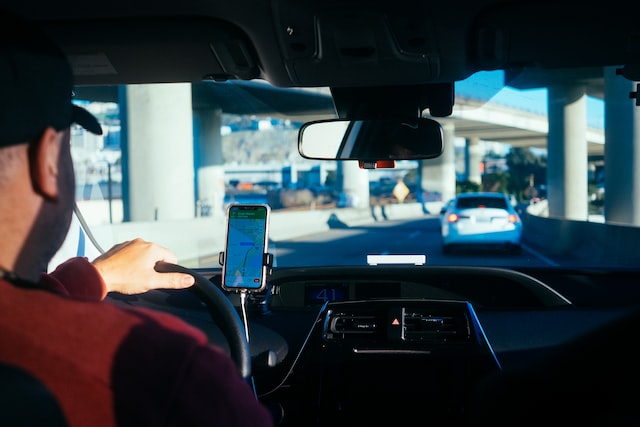
Cargroot is reader-supported. When you buy through links on our site, we may earn an affiliate commission.
Have you recently heard someone using the term Cruise main and wondered what it means? If yes, you are not alone. Not many drivers and car users know of this expression, but once you get the hang of this feature, there is no turning back.
A cruise main is a switch for the control system in your vehicle that maintains a steady set speed using an electric throttle. This speed also goes by the name cruising speed, hence the name cruise main.
Once you switch your car to the cruise main mode, this mode will automatically begin its operation and adjusts the speed of your vehicle to set a cruising speed. With the cruise main engaged in your car, you can maintain the set speed even without pushing the pedal.
We have compiled a comprehensive guide for you explaining the meaning of cruise speed, its working, when to use this mode, and what are the situations where this mode should be avoided, along with some additional information you would love to know about the cruise main system in your vehicle.
We will also take you through some advantages of using the cruise main system and some safety tips to help you along the way.
What Is the Meaning of Cruise Main?
The cruise main, as mentioned above, is a control system in the car that is concerned with adjusting the car’s speed and making it move at a set speed without having to press the pedal. Though this is what a beginner like you needs to know about the cruise main term, let us clarify one thing here.
Cruise Main is actually the button that’s used to turn on and off the cruise control system. The main system, however, cannot function completely just by pressing the cruise main button. You have to set the other settings of the system, decide on the speed, and perform multiple other operations before you can finally use this system.
You can use the cruise control system to adjust the vehicle’s speed, which enables you to maintain a steady speed that you can set without using the electronic throttle’s input.
In current times, you can find cruise control as a major part of standard car equipment, and it has only come with lots of positives. Thanks to this system, long hours of drives would no longer tire you as such, and you can relax a bit and stop caring about constantly looking at the tachometer for the speed limit adjustments.
A Little History of Cruise Control System
To explain the cruise control system better, let us take a peek into its history. The first ever cruise control system was invented back in the 1940s by Ralph Teetor. However, this was not the first time it was used in car production. In the year 1965, American Motors produced the first car featuring the cruise control system.
But it took over a decade for this system to gain popularity, especially when, in 1973, the fuel prices increased, and manufacturers started considering cruise control systems to save up on fuel costs.
Today, we can find the adaptive cruise control system in most vehicles that are used to maintain a constant car speed and can help you on long journeys. The best part about this system is the great efficiency it offers.
For instance, if a car at a slow speed gets in front of you while driving on the road, the cruise control system will automatically reduce your car’s speed. Similarly, it works to adjust the speed of your vehicle according to the speed limit.
Working of the Cruise Control System
The modern cruise control system comes on the engine control unit of the vehicles. As all the controls of this system feature electronic transmission, including brakes, steering, and throttle, there is no need for additional components. The only manual controls you need are buttons and the basic driver controls.
Though now this system is electronic, this wasn’t the case during the early days of the cruise control system. Earlier, this system featured drive-by-wire throttle bodies, and the entire system was cable-operated.
The cable network was such that one wire went from the pedal to the throttle body for the person in the driving seat to control the throttle. However, the leading cruise control cable reached the throttle body via the electric motor.
Later on, the cruise control motor goes to the tachometer and the control unit of the vehicle’s engine. This was followed by the electric body’s opening and closing of the throttle body while keeping an eye on the tachometer data once the speed was set.
How to Use Cruise Control?
Now that you know how the cruise control system works, let us take you through the entire process you need to know to use this system on your vehicle.
As mentioned earlier, the main button to turn on this system is Cruise Main, but this is not the only control you need to switch on for moving your car to the cruise control system. Here we have listed all the controls and buttons you need to know of to use the cruise control system effectively.
- As we have discussed before, the Cruise Main button is used to turn the cruise system on and off and has nothing to do with the cruise speed.
- As evident by its name, the Set button is concerned with setting the acceleration and the deceleration. This control is used for setting the speed for the cruise control system, the speed you want to travel with at any given instant.
- The Res button isn’t found in all cars, making it evident that it doesn’t have a crucial role in the cruise control system. This button is used to reset the previous speed of your cruise control system. On pressing this button, your system will become a plain canvas for you to set the new speed you want.
- The last two buttons of the cruise control system are named either “accel” and “decel” or “+” and “-.” in addition to the Set button, these also deal with controlling the acceleration and deceleration. However, both these buttons are used once you have set the speed using the Set button.
- By pressing any of these two buttons, you will i ncrease or decrease the cruise speed by 3 to 4 mph.
- In the end, you can push the Cruise Main button once again to stop the working of the whole cruise control system.
Why Use the Cruise Control System?
Though the cruise control system doesn’t have any apparent harm, and all you can notice when first hearing about this system are the positives it brings to the table, some people still contemplate using this speed control system on their vehicles.
If you are also one of them, we have listed some major benefits of using this system. These benefits might help you make the final decision.
Maintain Constant Speed
One significant benefit you will get while using the cruise control system. No one loves to drive for long hours on straight and boring roads. The worst part is that you can’t even fall asleep during this long journey if you have gotten hold of the driver’s seat.
But don’t worry, using the cruise control system; you can now leave the car to move on the road on its own as this system will adjust the speed depending on the road conditions and the surroundings, allowing you to relax.
Fuel-Efficient
One of the main reasons you should consider using the cruise control system is its fuel efficiency. As we have mentioned in the history part, one of the things that got the cruise system all the fame and popularity it has now is the time when the fuel prices were increased, and manufacturers moved towards this for its fuel efficiency.
Your engine will use the same fuel level when you drive at a constant and steady speed. Using the cruise control system, the speed can be adjusted, changing the fuel level being used, thus causing a significant reduction in fuel costs.
No Speeding Tickets
If you don’t want to get speeding tickets just because you have lost sight of the tachometer, the cruise control system is something you need to consider. As for this system, the speed is controlled by the machine itself with the help of different sensors; there are very few chances for you to get a speeding ticket. Isn’t it great?
Turning Off the Cruise Control
If this is your first time using the cruise control system, and you have no idea how to turn it off, here are the steps you can follow.
- Press the brake pedal, and the cruise control system will stop working.
- You can also press the Cruise Main to turn off the cruise control system.
Increasing the Cruising Speed
Following are the steps you need to go through to increase the cruising speed of your vehicle.
- Hit the “SET” button and hold it for a few seconds.
- Your vehicle’s speed will begin accelerating. Once it reaches the desired speed, let go of the “SET” switch.
- Now, press the “SET” button and let go of it immediately to adjust the preset speed.
You can also increase the cruising speed using the accelerator pedal. Here is what you need to do for this:
- Press the accelerator pedal and wait till your vehicle reaches the desired speed.
- Once the desired acceleration is reached, let go of the accelerator pedal.
You have successfully increased the cruising speed of your vehicle.
Decreasing the Cruising Speed
Here is what you need to follow to reduce the cruising speed:
- Once you have set the cruising speed for your vehicle and your vehicle is moving at that speed, press “SET” and hold it.
- Wait till your car decelerates to the desired speed and release the “SET” button.
- Hit the “SET” switch and let go of it immediately to adjust the preset speed.
How To Cancel the Cruise Control System Temporarily?
If, during your long driving journey, you want to turn off the cruise system temporarily, here is how you can do this:
- Press the brake pedal slightly and wait for a few seconds till the system turns off.
- You can also press the “CANCEL” switch to turn off the cruise control system.
- When you want to turn it on again, simply hit the “RESUME” button.
Cruise Control Safety Precautions
Though the cruise control system is harmless for the most part, there are still some precautions and safety tips you need to pay heed to avoid any mishaps. Here are some of the cruise control system safety precautions for you to save yourself from any unfortunate events:
Avoid Overspeeding
One of the first things you need to keep in mind while using the cruise control system is the cruising speed. Though this system is efficient and packed with highly responsive sensors, setting the vehicle at a steady speed is still recommended. Ensure that you are not accelerating the car too much, as this can lead to accidents.
Not In Corners
If you are moving your car mainly in the corners of the road, no matter how much you are sure of it, it’s hard to control the vehicle’s speed. In this case, you might as well have to make a lot of adjustments in the cruising speed, which is why it’s best not to use the cruise control system when in corners.
Don’t Drive On Slippery Roads
Avoid using the cruise control system if the road you are driving on is too slippery. It’s because, to work effectively, this control system needs to determine the available friction on the road, which is nearly impossible if the road is slippery.
Don’t Sleep
As we have mentioned in the benefits part, you can relax using the cruise control system while in the driver’s seat, but this doesn’t mean you can take a nap. Though most drivers are tempted to take a short nap, considering the risk trackers on the cars and the high efficiency of the cruise control system, it’s still not something experts recommend.
Conclusion – What Does Cruise Main Mean in a Car?
In this guide, we have explored the meaning of the cruise main and the cruise control system in detail. We have also taken you through all the steps you need to go through for setting up or using the cruise control system, along with some simple steps for increasing and decreasing the cruising speed.
We have also listed some of the main advantages of using the cruise control system and some precautions to pay heed to while doing that. Hopefully, this guide has answered all your questions regarding the cruise control system, and you are now fully prepared to tune your car into this mode.
LEAVE A REPLY Cancel reply
Save my name, email, and website in this browser for the next time I comment.

Car Feels Like It Is Going To Stall When Stopped –...

[Solved] Car Shaking in Reverse – Why & How to Fix...

C121c Torque Request Signal Denied? Causes, Diagnosis & Fixes!

What Does SVC Tire Monitor Mean? Benefits, Causes & Fixes!

Oil Pressure Gauge Goes Up When Accelerating
- Terms & Conditions
- Cookie Policy
- Privacy Policy
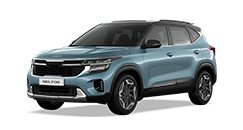
- Commercial Vehicle
- Find a Dealer
- Request a Brochure
- Request a Quote
- Request a Test Drive
- Service Center
- Service Policy
- Book a Service
- Our Movement
- Our Inspiration
- Sponsorship
- Sustainability
- Local Company
- Investor Relations
- Discover Kia >
- What is cruise control?
“Cruise control allows you to maintain a set speed without using the accelerator. Once you've selected the speed, you can take your foot off the accelerator and the vehicle will cruise at that speed.”
What Is Cruise Control
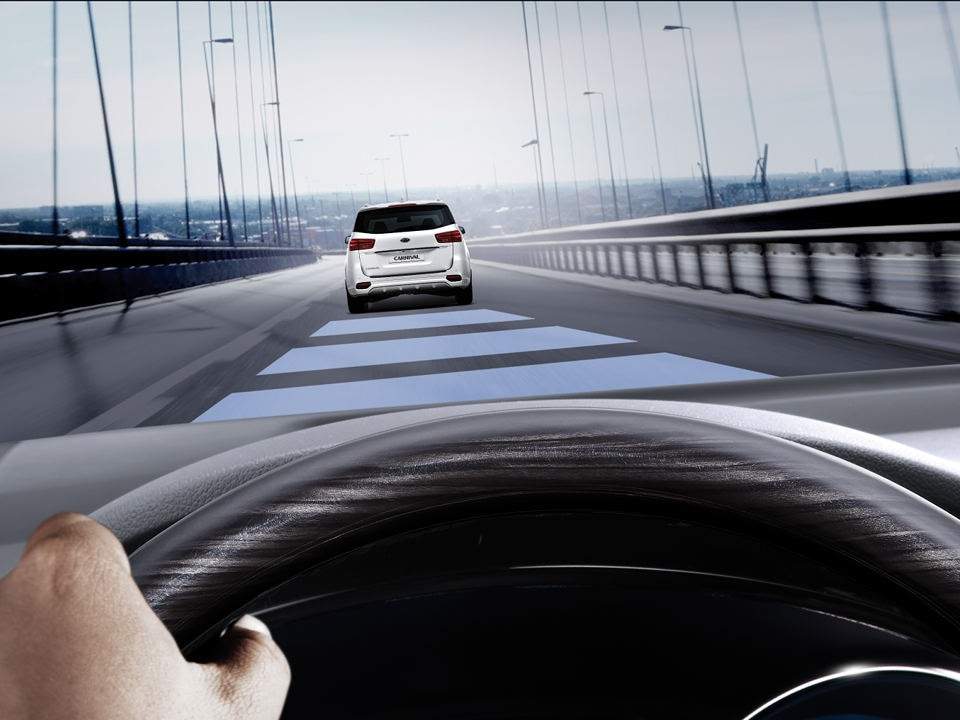
Cruise control is a feature that comes in handy when you drive at a constant speed. It is an electric system that allows you to set your car to a specific speed, letting you take your foot off the accelerator pedal. So, it can ease foot-fatigue and stress over a long drive. Another great benefit to using cruise control is that you are going to have greater fuel efficiency. Your vehicle will consume much less fuel if you cruise at a steady speed rather than accelerating at each section of the open road. When you accelerate sharply, it makes your engine use more energy, and you could be using 60% more fuel than one who uses cruise control. Ultimately, it's not hard to save on fuel if you let your vehicle automatically maintain a steady cruising speed.
The leading edge of cruise control today is adaptive cruise control. Almost all cars now will be equipped with this smart system. Just as conventional cruise control, adaptive cruise control allows you to set a desired travel speed. But the difference is that the adaptive cruise control maintains a safe distance between the car in front of you and your car at a consistent pace by using the forward-mounted sensors. For instance, if the car ahead of your vehicle begins to slow, adaptive cruise control will use the engine brake to automatically slow the pace of your vehicle and maintain the selected distance. Many say adaptive cruise control is a step to autonomous cars in the future. But it is not quite fully autonomous driving, since you have to keep your hands on the wheel and be fully cognizant of the road.
How To Use Cruise Control
Typically, the cruise control buttons can be found on the right-hand side of the steering wheel. Depending on the car, the location of the controls can vary, but the functionality of the cruise control will usually be similar across the board. Here are the basic buttons you can use to operate cruise control.
ON/OFF : To set the cruise control, press the ON/OFF button. You will see the cruise light illuminate on the dashboard which means the system is activated. To turn the system off, press this button again.
Res + : Press this button if you want to increase the cruising speed. Each time you hit the button, the vehicle will accelerate by 1 mph. You can also use this button to resume your previously set speed.
Set - : This button will decrease the set speed. Each time you press the button, the cruising speed will decrease by 1 mph. Once you reached the desired speed, hit the “Set” button and the “Cruise Set” icon will appear on the dashboard. Then you can take your foot off the gas pedal and the car will maintain the speed for you.
Cancel : When it's time to cancel the cruise control mode, like when you exit the highway or if there is heavy traffic ahead, press this button to disengage the cruise control system. Or you can simply depress the brake pedal to cancel the system.
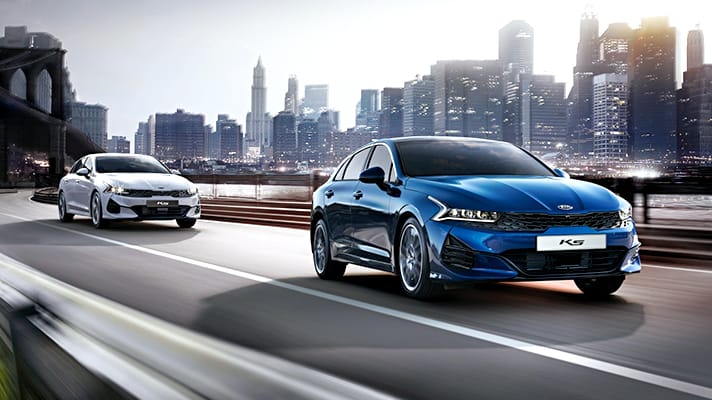
Safety Tips for Using Cruise Control
However smart the cruise control may be, there are some situations where you SHOULD NOT use the feature altogether. Here are some golden rules to live by when it comes to using your cruise control.
- On wet roads, it could be dangerous to use cruise control. It will be less effective in the rain, and cruise control may upset the balance and reaction times under rainy conditions.
- During rush hour, it is a good idea to leave the cruise system off. With conventional cruise control, you will have to continuously turn it off when traffic slows down and you can get into an accident if you are distracted while it is active.
- On challenging winding roads, you should not use cruise control. Note that cruise control is primarily designed to enable you to cruise on the highway at a set speed. If you are not doing so, it is best not to use it.

- Shopping tools
- Discover Kia
- 2023 Seltos
- 2023-sportage

What Does Cruise Main Mean In A Car? (Control Light On)
Have you ever seen the term “cruise main” in your car and had no idea what it meant? Cruise main is a term used in cars to describe a system that helps the vehicle maintain its speed. You may not have used it before. But if you’re planning a long road trip, it’s worth considering.
A cruise main control system uses an electronic throttle to maintain a set speed, also called a cruising speed. When activated, the cruise main will automatically adjust the idle speed and throttle position to maintain the desired speed.

When engaged, this system will automatically adjust your car’s speed to maintain the set cruising speed even if you take your foot off of the pedal. Learn more about Cruise Main in today’s blog post!
Overview Of Cruise Main
The cruise main switch is typically a simple button attached to the steering wheel that the driver can easily operate. In most cases, the switch will be clearly labeled with the word “cruise” or a symbol indicating that it controls the cruise control system.
How Is It Beneficial?
Cruise Main is said to be beneficial for those who want to avoid getting speeding tickets and those who want to be able to drive more safely . But what are the other benefits of using the cruise main in your car? Let’s take a look.
Saves Your Car’s Fuel
For one, cruise control can help you save on gas. By keeping your car at consistent speed control, you can avoid wasting gas by accelerating and braking too much. It can add up to big savings over time, especially if you do a lot of driving.
Stay Safe On Roads
Another benefit of cruise control is that it can help you stay safe on the road. You’re more likely to get into an accident if you’re constantly changing speeds. But if you keep your car at a steady speed, you’re less likely to have an accident . You’re less likely to make sudden moves that could cause an accident.
Helps You Relax On Long Trips
Lastly, cruise control can help you relax on long trips. If you’ve ever driven for hours, you know how tiring it can be. But if you have cruise control, you can just set it and forget it. You won’t have to worry about constantly adjusting your speed or worrying about traffic. You can just relax while your car does all the work.
How To Use Cruise Control In Your Car?
Here’s a quick rundown of how to use cruise control in your car:
- Find the cruise control button – It’s usually located on the steering wheel, near the car’s other audio and Bluetooth buttons.
- Set your desired speed – Once you’ve found the cruise control button, press and hold it until the desired speed is reached.
- Release the button – You can release the cruise control button once you reach your desired speed. The car will maintain that speed until you press the brake pedal or the cruise control button again.
- Resume your desired speed – If you need to slow down for traffic or a turn, press the resume button (usually located near the cruise control button) to return to your desired speed.
See Also: Service Stabilitrak Meaning: Understanding Stabilitrak System And Steering Wheel Messages
How To Turn Off Cruise Control?
You might want to turn off your adaptive cruise control for a few reasons. Maybe you’re approaching a stop sign or traffic light and must slow down. Or perhaps you’re going downhill and don’t want the car to speed up too much.
Whatever the reason, it’s easy to turn off your cruise control. Just press the brake pedal, and the cruise control will disengage. You can also turn the cruise control knob off to the “Off” position.
If you need to slow down for a stop sign or traffic light, it’s best to press the brake pedal instead of relying on cruise control to do it for you. You can keep your foot on the gas and avoid jerky starts and stops.
Check Out How To Use Cruise Control-EASY Driving Lesson:

Tips To Use Cruise Control Safely
Here are a few tips on how to use cruise control safely:
Pay Attention To The Road
You need to know what’s happening even though you’re not actively accelerating. Cruise control won’t brake for you, so if there’s a sudden slowdown ahead, you’ll need to be ready to hit the brakes.
Use It In Good Weather
Cruise control can be tricky in heavy rain or snow since your car’s speed can fluctuate with different road conditions. If the weather is bad, it’s best to turn off cruise control and drive manually.
See Also: What Does VSA Mean On A Car? (Vehicle Stability Assist Warning Light On)
Don’t Use It On Winding Roads
Cruise control can be dangerous on twisty roads since your car might go too fast for the conditions. If you’re driving on a windy road, it’s best to turn off the cruise control and drive manually.
Be Prepared To Take Over
Even if you’re using cruise control, you should still be ready to take over at any time . If something unexpected happens, you’ll need to be able to react quickly.
Can Cruise Control Increase Gas Use?
This question has no definitive answer, as fuel economy can vary greatly depending on several factors. If you have a fuel-efficient car, cruise control can help you save money on gas. Cruise control may not make much difference if you have an older, less fuel-efficient vehicle.
Does the cruise control turn off when you brake?
The answer to this question largely depends on the type of cruise control system your vehicle is equipped with. For example, many older cruise control systems will disengage when the brake pedal is depressed.
However, newer cruise control systems often have a feature to remain engaged even when the brake pedal is depressed. So, it depends on the specific system your vehicle is equipped with.
What Does Coast in a Car Mean?
Coasting is when the driver takes their foot off the gas pedal and coasts without using the brakes. Coasting conserves fuel and can be used as a driving technique to save gas. There are a few different ways that you can coast in a car: – One way is to take your foot off the gas pedal and naturally let the vehicle slow down. – You can also downshift to a lower gear to help the car slow down . – And finally, you can use the brakes to bring the car to a stop slowly.
When Should Cruise Control Not Be Used?
There are a few circumstances in which you should not use cruise control. These include when the weather is bad, driving in heavy traffic, or on a winding road.
Additionally, it’s important to be aware of your vehicle’s speed limit and not raise the cruise control. Finally, if you need to make a sudden stop, it’s important to disengage the cruise control.
Why do I always have my cruise control on?
The first possibility is that your car’s cruise control system is stuck in the “on” position. It can happen for several reasons, but the main cruise control switch that turns the system on and off is the most common problem. If this switch is damaged or malfunctioning, it could cause the cruise control to stay on permanently.
Another possibility is that there is a problem with the cruise control itself. If it’s not working properly, it could send a signal to the car telling it to keep the cruise control on. Many things, including a loose wire or a faulty sensor , can cause it.
Final Considerations
Cruise control can be a great asset on long road trips , but it’s important to use it safely. Pay attention to the road and keep your hands on the wheel , even when cruise control is engaged. And if you’re ever in doubt, it’s always best to disengage the system and drive manually.
Recommended Reads

Find Me On:
Here at AxleWise we know that finding the best car advice is a real pain! There are so many different websites out there, all claiming to be the best resource on the world wide web. AxleWise was created with you in mind our sole purpose is to help and provide you with accurate and educative information!
Address: 6220 Westpark Dr, Houston, TX 77057 | Phone: +1 (956)-254-0232 | Email: [email protected]
Copyright © 2024. All rights reserved.
Updated on 07-22-23

Definition of 'cruise car'
Cruise car in american english, browse alphabetically cruise car.
- cruise a highway
- cruise control
- cruise fare
- cruise holiday
- All ENGLISH words that begin with 'C'
Quick word challenge
Quiz Review
Score: 0 / 5

Wordle Helper

Scrabble Tools

- More from M-W
- To save this word, you'll need to log in. Log In
Definition of cruise
(Entry 1 of 2)
intransitive verb
transitive verb
Definition of cruise (Entry 2 of 2)
- gad (about)
- galavant
- kick around
- knock (about)
Examples of cruise in a Sentence
These examples are programmatically compiled from various online sources to illustrate current usage of the word 'cruise.' Any opinions expressed in the examples do not represent those of Merriam-Webster or its editors. Send us feedback about these examples.
Word History
Dutch kruisen to make a cross, cruise, from Middle Dutch crucen , from crūce cross, from Latin cruc-, crux
1651, in the meaning defined at intransitive sense 1
1696, in the meaning defined above
Phrases Containing cruise
- adaptive cruise control
- cruise control
- cruise missile
- radar cruise control
- cruise ship
- booze cruise
- cruise liner
Dictionary Entries Near cruise
Cite this entry.
“Cruise.” Merriam-Webster.com Dictionary , Merriam-Webster, https://www.merriam-webster.com/dictionary/cruise. Accessed 17 Apr. 2024.
Kids Definition
Kids definition of cruise.
from Dutch kruisen "to cruise, move crosswise," from early Dutch crūce "cross," from Latin crux "cross" — related to cross , crucial
More from Merriam-Webster on cruise
Nglish: Translation of cruise for Spanish Speakers
Britannica English: Translation of cruise for Arabic Speakers
Subscribe to America's largest dictionary and get thousands more definitions and advanced search—ad free!

Can you solve 4 words at once?
Word of the day, circumlocution.
See Definitions and Examples »
Get Word of the Day daily email!
Popular in Grammar & Usage
Your vs. you're: how to use them correctly, every letter is silent, sometimes: a-z list of examples, more commonly mispronounced words, how to use em dashes (—), en dashes (–) , and hyphens (-), absent letters that are heard anyway, popular in wordplay, a great big list of bread words, the words of the week - apr. 12, 10 scrabble words without any vowels, 12 more bird names that sound like insults (and sometimes are), 9 superb owl words, games & quizzes.


Auto Review Hub
Car Safety Features and What They Mean
Posted: February 29, 2024 | Last updated: February 29, 2024

Traffic Sign Recognition
Using a forward-pointed camera, this feature recognizes important road signs that the driver should know.
Acting as a backup sight for the driver, it recognizes anything from speed limit signs to railroad crossings, displaying them on the driver’s touchscreen or Head-Up Display.
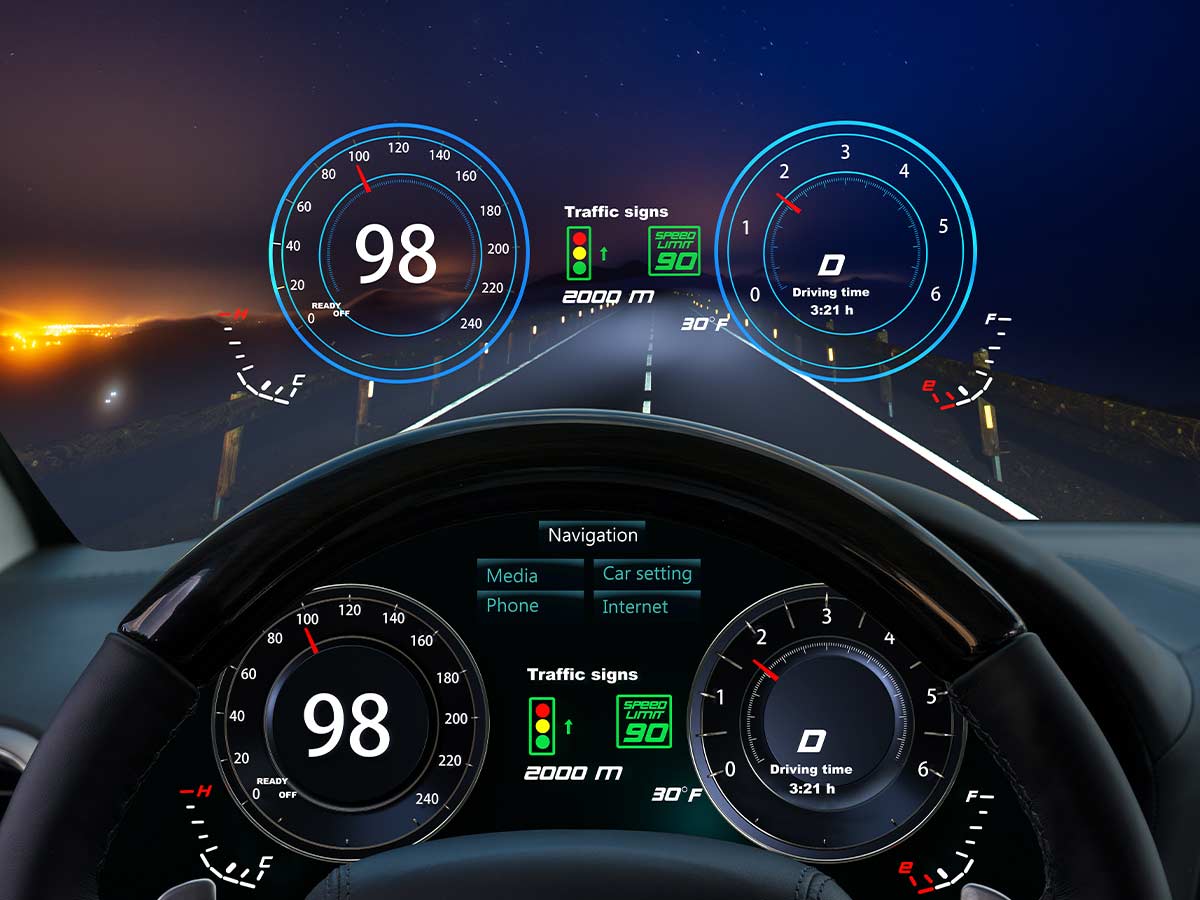
Heads Up Display
The Head-Up Display projects important information just below the driver’s line of sight.
This technology encourages drivers to keep their eyes on the road, potentially preventing accidents and saving lives. HUDs can display speed limits, music tracks, temperature, and incoming calls.
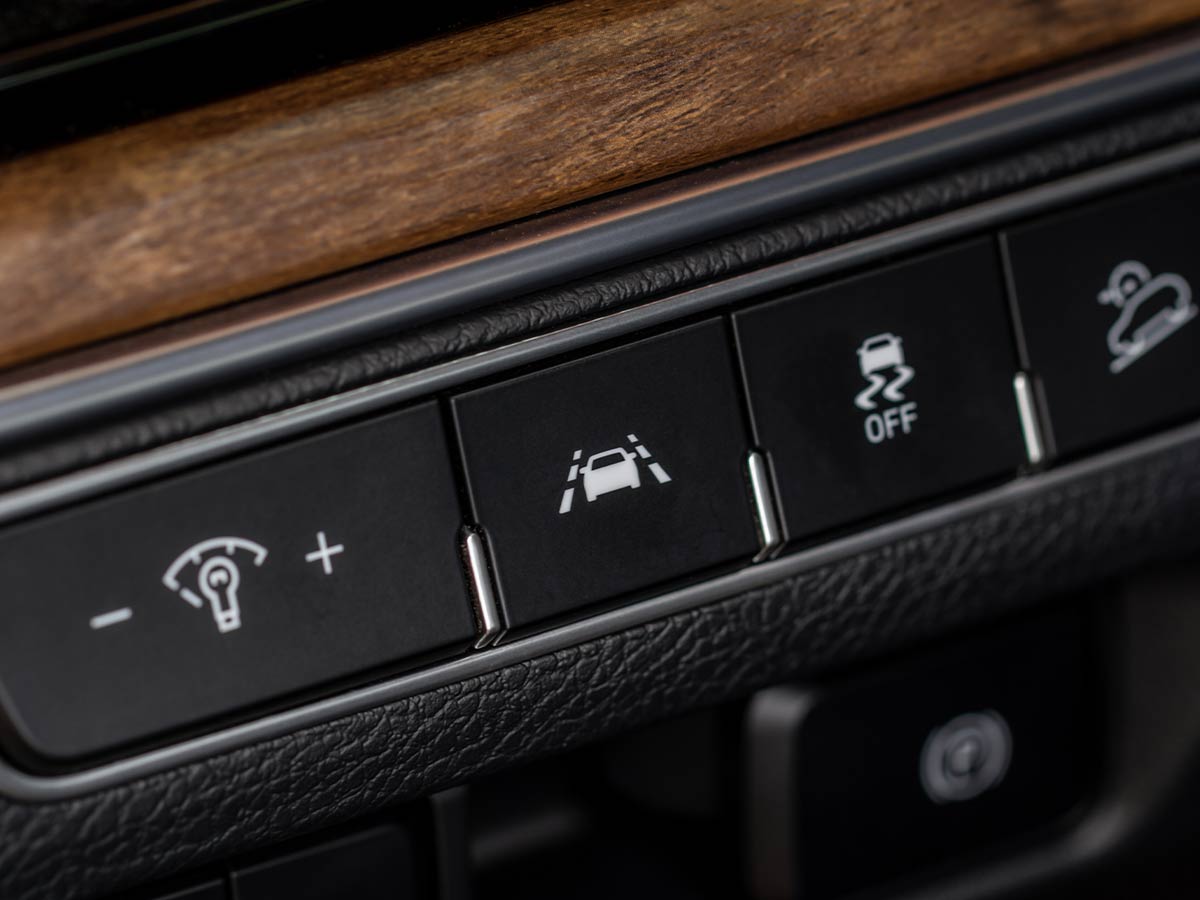
Lane Departure Warning
The Lane Departure Warning is engaged when a vehicle begins to drift out of its designated lanes without a turn signal.
It is usually in the form of a beeping noise and is meant to keep drivers aware of their actions and prevent collisions.
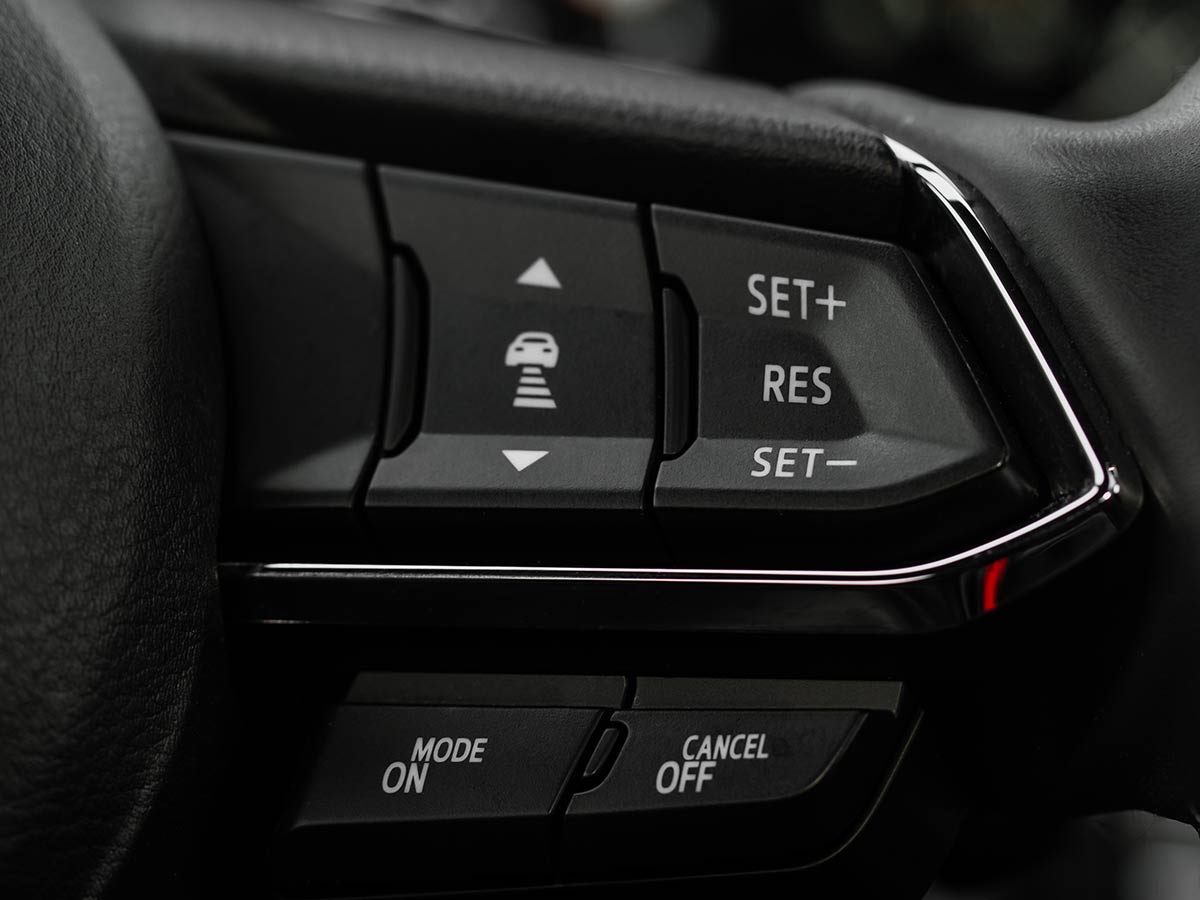
Adaptive Cruise Control
While Standard Cruise Control maintains a preset speed, Adaptive Cruise Control reacts to surrounding traffic.
Once turned on, ACC can slow the vehicle to match the car ahead of it, stop the vehicle if a collision is predicted, or reduce speed to manage curves in the road safely.
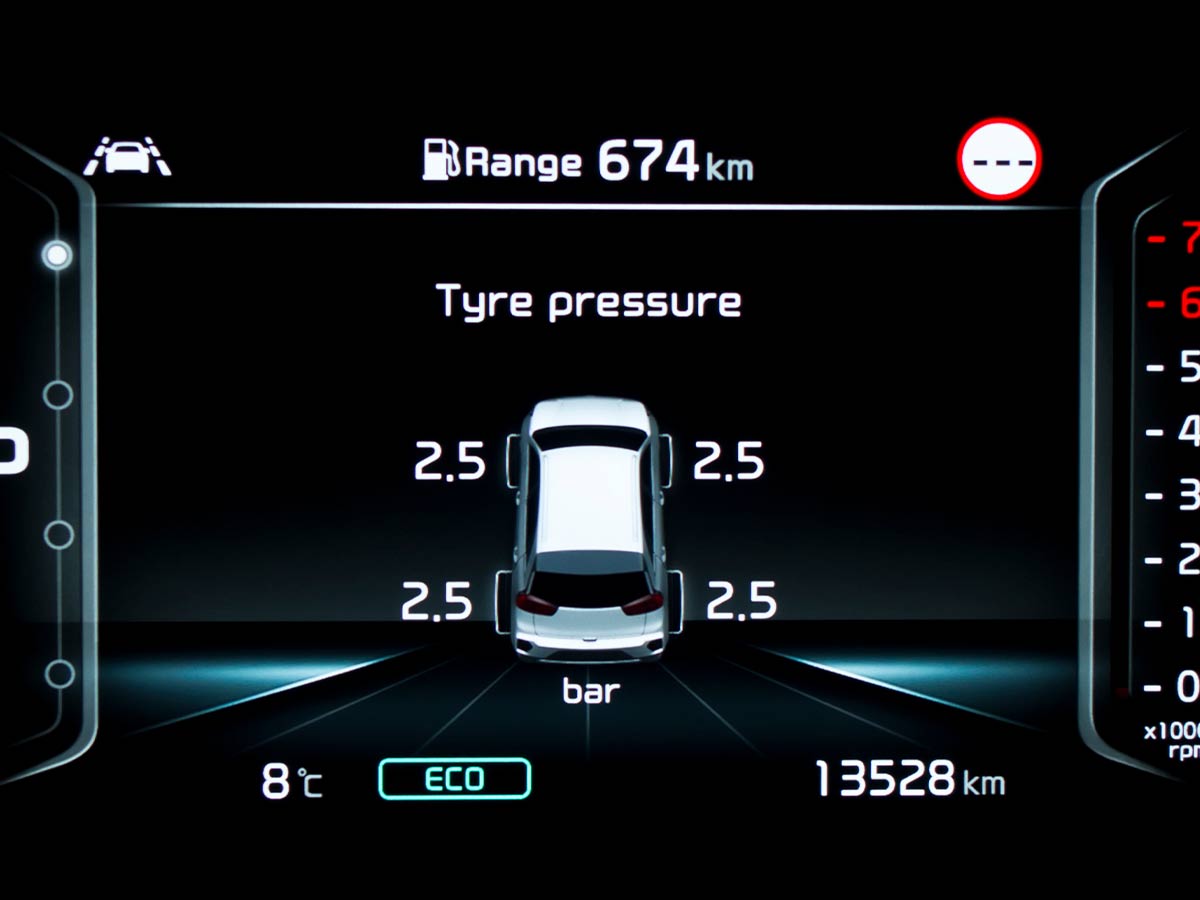
Tire Pressure Monitoring System
As of 2007, this feature became mandatory in most new cars. This system relies on a simple sensor located inside each tire.
It tracks the air pressure and warns the driver when the pressure is low. It's essential to keep track of this so your tire doesn't blow out.
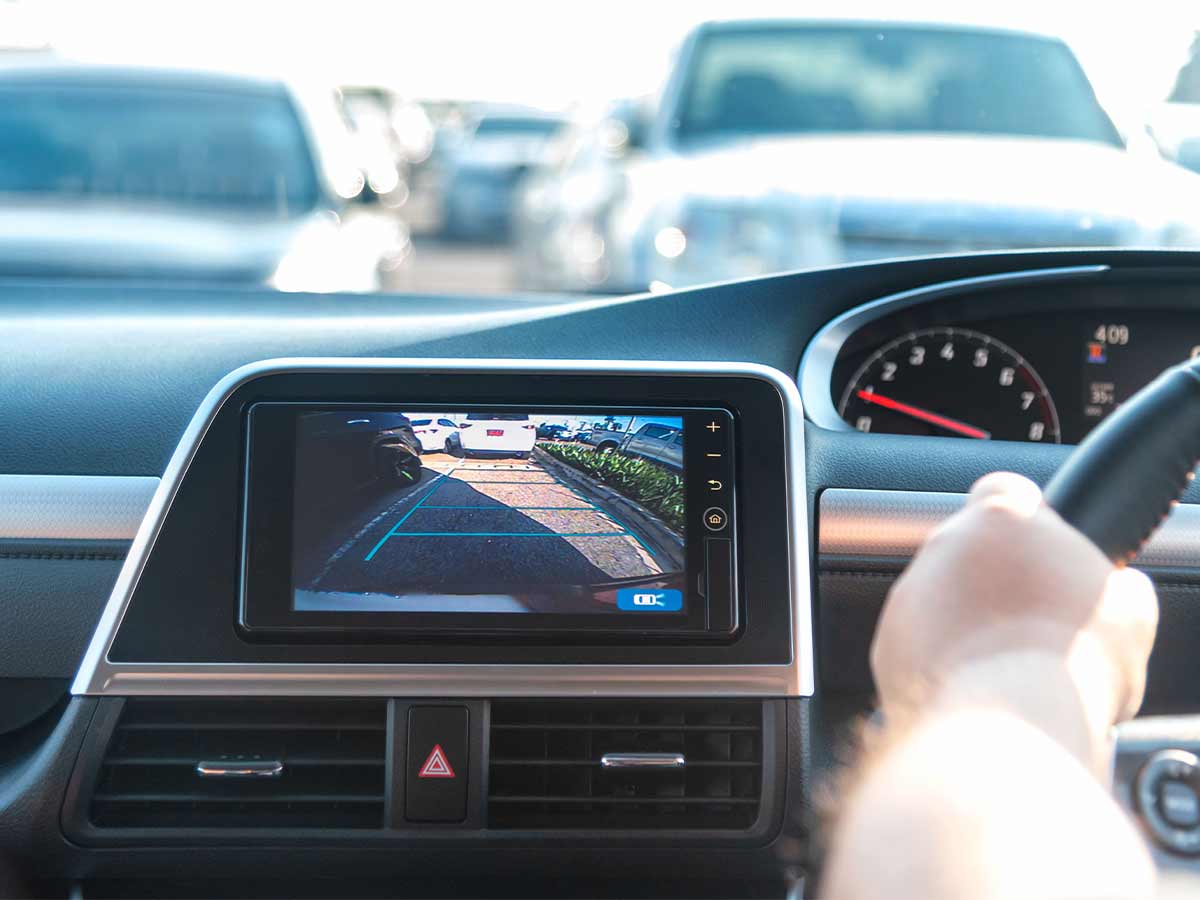
Backup Camera
Using a rear-pointed camera, this feature is activated when the car is placed in reverse. Meant to aid in backing into or out of a parking space, this feature also helps detect pedestrians.
The backup camera was another feature that was previously just optional, but now it's a gold standard for new automobiles.
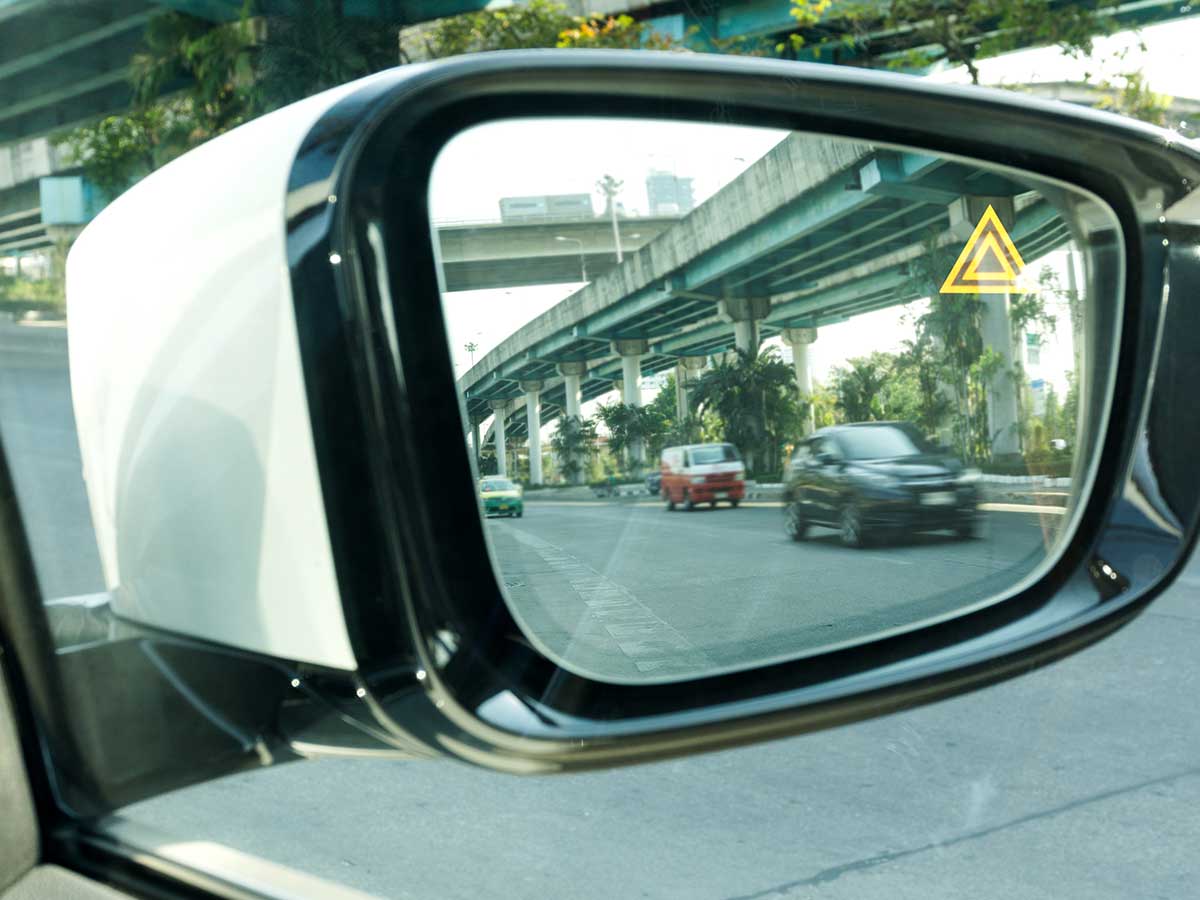
Blind Spot Monitoring
This feature uses sensors on either side of the car to detect cars, with the hope of preventing collision. Blind Spot Monitoring helps drivers be aware of their surroundings while on the road.
Some cars connect this feature with a camera view of the blindspot that appears on the driver dash display or the HUD.
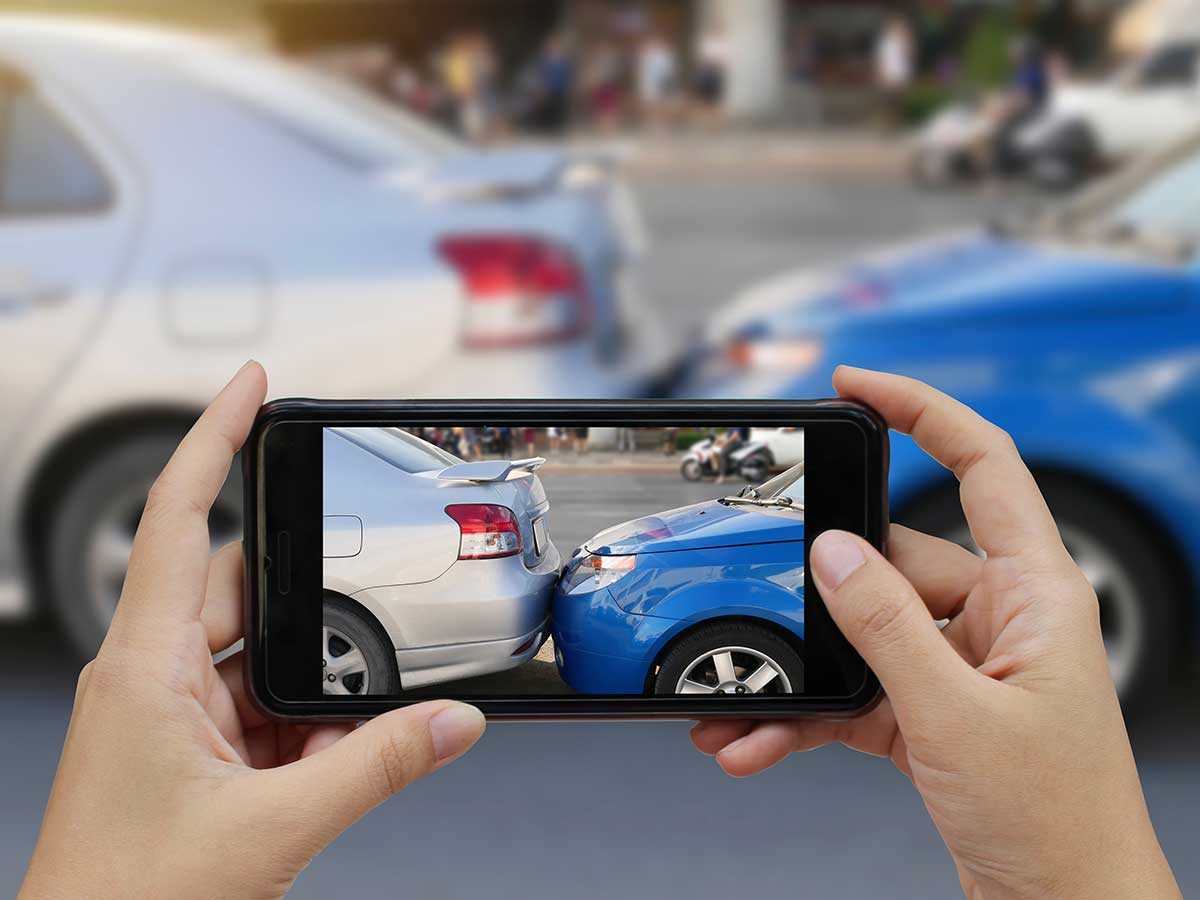
Forward Collision Warning
Forward Collision Warning uses front-facing cameras and radar to detect cars, pedestrians, and even animals.
Once something is detected, it sends a warning message to the driver. These messages can be tactile, auditory, or visual.
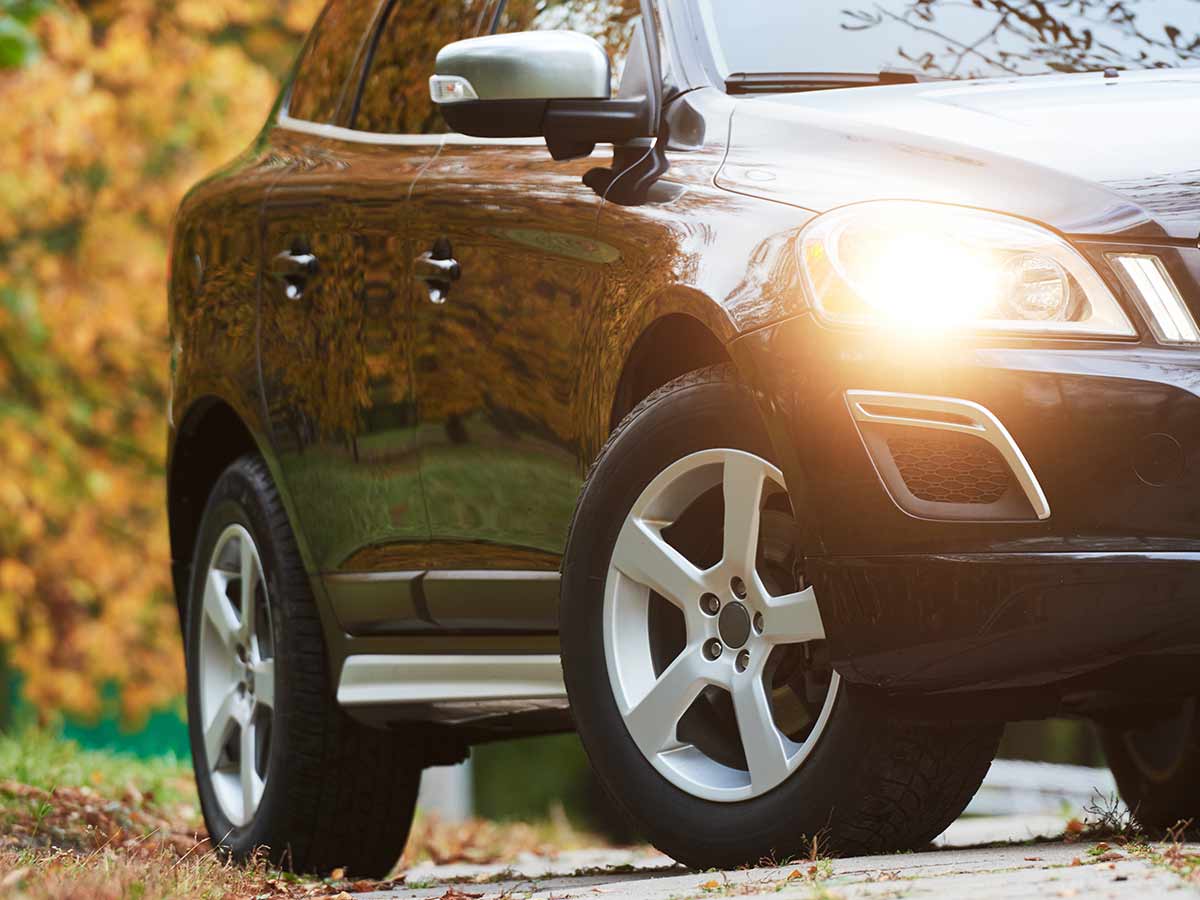
High Beam Assist
Using sensors placed at the front of the vehicle, High Beam Assist senses cars approaching and automatically adjusts the headlights to be either high beams or low beams.
This safety feature is meant to prevent blinding oncoming traffic with high beams, helping to improve safety when driving at night.
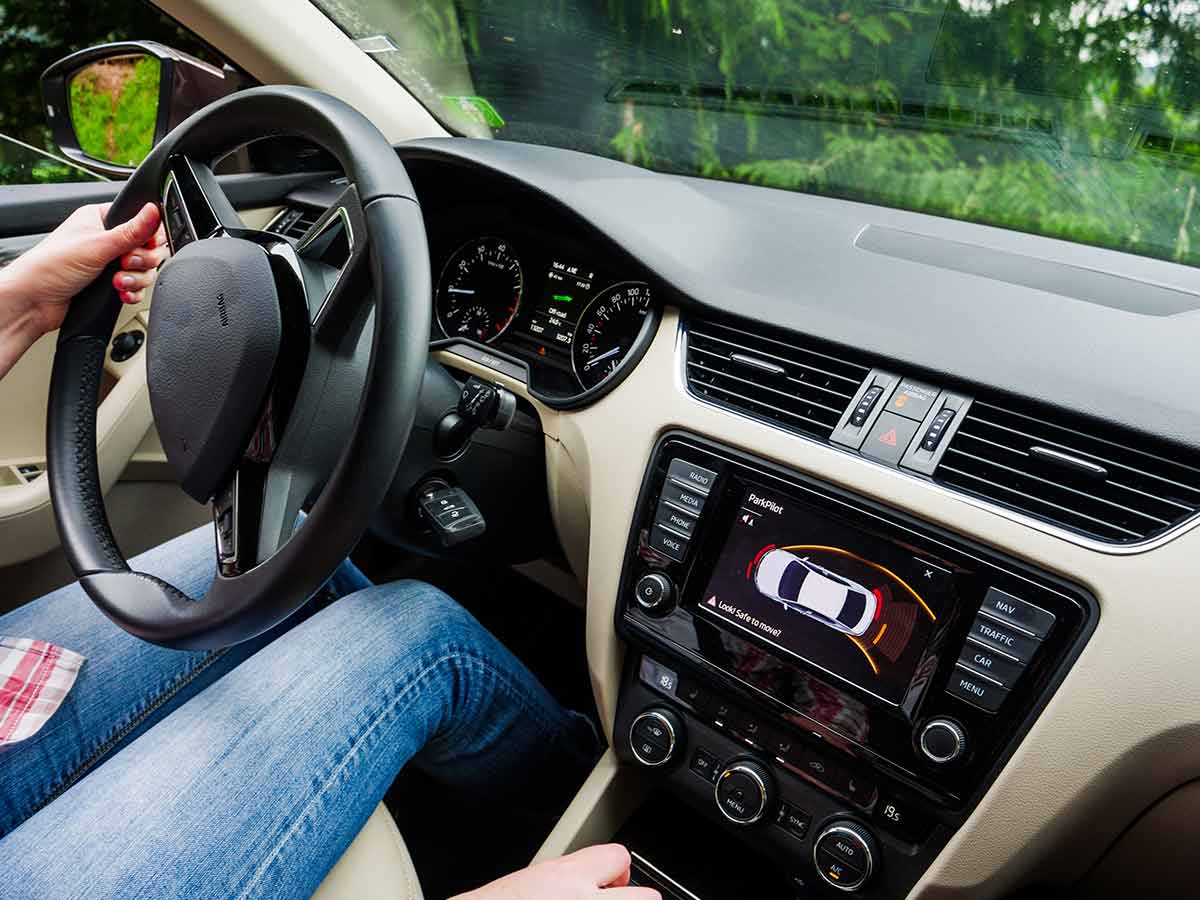
Park Assist
With Park Assist, the vehicle can take control of the motor functions to aid the driver in parking situations.
By using a combination of cameras, sensors, and control over the steering wheel and speed, this feature parks the car while avoiding cars and other objects– all without the driver's help. It is most popularly used to aid drivers in parallel parking.
More for You
Caitlin Clark’s rookie salary with WNBA sparks outrage
China Proposes New Four-Point Peace Plan for Ukraine-Russia
One Nigerian entrepreneur's solution for millions of old tires
TikTok star Kyle Marisa Roth dies at 36
Another popular beer, brewery brand files Chapter 11 bankruptcy
Scott Peterson defense drops motion to seal in bid for new trial after prosecutors note files mostly public
How to digitize VHS tapes the cheap way
Revisiting Molly Qerim's qualm with LeBron James: "I think he is setting up the narrative"
The passport rule that prevented Vicky Pattison from boarding her flight – and how to avoid the same mistake
Where is Jennifer Pan from ‘What Jennifer Did’ now?
0417 Today in History
35 People with Higher IQs Than Einstein
U.S. women’s track Olympians say photo was shocking but uniform isn’t
Tech trick: How to tell who’s calling when you don’t recognize the phone number
Clarence Thomas Calls Veteran's Argument 'Especially Unconvincing'
Angel Reese's WNBA Salary Revealed After Being Selected With No. 7 Overall Pick
Fact Check: Millions Watched 'James Bond 26' Trailer on YouTube Featuring Henry Cavill and Margot Robbie. However, It's Simply a 'Concept Trailer'
Red Lobster considering bankruptcy filing: report
Target drops a trendy (and exclusive) new line for spring
I moved from California to Tennessee for my husband's job. We can finally save money, but it's been a major culture shock.
Grandmother, 80, killed when car plows into 5 diners outside restaurant
MATLACHA, Fla. (WINK) - An 80-year-old woman dining outside a Florida restaurant was killed and four other people, including her boyfriend, were injured after they were hit by a car that veered off the road.
Mary Lou Sharp, 80, and her boyfriend, 77-year-old Butch Gay, were enjoying a meal outside of That BBQ Place in Matlacha around 5:50 p.m. Saturday. The Florida Highway Patrol says a sedan hit five people seated at the restaurant’s outside tables. It also hit a pickup truck and a parked motorcycle.
Sharp was killed in the crash, and Gay was hospitalized with serious injuries. Three others had minor injuries, according to FHP.
Michael O’Brien and his wife witnessed the crash and jumped into action. They told WINK the incident has kept them up at night.
“He’s driving through the tables. There’s a guy on the hood of the car and another woman on top because they’re trying to hang on,” O’Brien said. “You see people flying up in the air and tables. It’s just – I don’t know how to describe it. It was traumatic.”
Sharp’s granddaughters, Danielle and Kasha Darna, told WINK the 80-year-old always had a smile on her face and told the best stories.
“Just hold everyone tight, love everyone and try to be the best person you can. That’s all I have to say. My grandma did that, and she lived to be 80 years old,” Danielle Darna said.
Charges are pending against the 24-year-old driver involved in the crash, as the investigation continues.
“We’d like to see the driver held accountable for what he did,” Kasha Darna said.
Copyright 2024 WINK via CNN Newsource. All rights reserved.

Woman accused of 1st-degree manslaughter, child abuse pleaded not guilty

Dakota Gun Show sounds off in Rapid City

Highway Patrol urging drivers to be safer after two major accidents in Rapid City

No lay-offs or re-routing mail amid concern from South Dakota lawmakers

Men caught on camera destroying ancient rock formations at national park
Latest news.

A business hires a shop cow. He quickly becomes a local celebrity

Senate to convene Mayorkas impeachment trial as Democrats plot quick dismissal

Teenager with viral American flag pickup drove to Oklahoma to fulfill cancer-stricken child’s wish

Biden is seeking higher tariffs on Chinese steel as he courts union voters

Voting technology company settles lawsuit against far-right news outlet over 2020 election claims

IMAGES
VIDEO
COMMENTS
Cruise control, also known as speed control, is an electronic system that allows you to maintain a specific speed without manually controlling the accelerator pedal. The system uses sensors and electronic components to control the throttle and keep your car moving at a desired speed.
Just press the gas pedal to bring your car up to the new speed, and hit the "SET" button again. This will set cruise control at the new speed. If your car has a +/- button for cruise control, press this when you want to raise or lower your car's speed. Part 2.
Cruise control in a car replicates the inputs of a driver to control the vehicle's speed. But instead of pressing the accelerator pedal, it uses a different mechanism to maintain a constant cruising speed. Initially, the system used a cable to control the accelerator (throttle valve). You can find these mechanisms in older cars.
The cruise control system controls the speed of your car the same way you do -- by adjusting the throttle position.But cruise control actuates the throttle valve by a cable connected to an actuator, instead of by pressing a pedal.The throttle valve controls the power and speed of the engine by limiting how much air the engine takes in (see How Fuel Injection Systems Work for more details).
Cruise control (also known as speed control, cruise command, autocruise, or tempomat) is a system that automatically controls the speed of an automobile. The system is a servomechanism that takes over the car's throttle to maintain a steady speed set by the driver.
Cruise control is an electronic device within your vehicle that controls the speed of your vehicle. It allows the driver to maintain a constant speed of 25 mph without holding their foot on the accelerator. Although the feature has been around for 70 years, automotive manufacturers continue to improve upon the technology to provide drivers with ...
You operate cruise control by either a stalk on the steering column or several buttons on the steering wheel. These include an on-off switch; a "set" button to select the speed you want the car to ...
Cruise control is a system in cars that automatically controls the speed of the car. The driver sets a desired speed, and the cruise control system will maintain that speed without the driver having to do anything. Adaptive cruise control is an improved version of cruise control that automatically slows down and speeds up the car in order to ...
1. Definition. Cruise control is an electronic system that allows a vehicle to maintain a consistent speed, without the need for continuous driver input on the accelerator pedal. 2. Activation. Cruise control systems are typically activated by pressing a button or switch located on the steering wheel or dashboard. 3. Function.
Cruise control was originally only found on high-end luxury cars, but now even the smallest cars often have it fitted as standard. If you have never used cru...
This cruise control is a kind of driving on auto-pilot mode. It automatically controls the car's steady speed by taking the control of the throttle body. It comes in cars having a drive-by-wire system where an electronically controlled throttle body is manipulated by a cruise control computer. The cruise control computer is a small computer ...
Adaptive cruise control (ACC) is a system designed to help vehicles maintain a safe following distance and stay within the speed limit. This system adjusts a car's speed automatically so drivers ...
The cruise control system uses an actuator which controls the accelerator allowing the car to continue driving at a set speed. The actuator is connected to the throttle via a cable. During cruise control, the cable is not just monitoring the car's speed but also the power of the engine. It ensures that the engine takes in the exact amount of ...
Set the cruise control: Once you've switched the system on, press the set button. This will communicate with your car to hold the current speed. In most vehicles, this will turn the dashboard indicator green. After the cruise control is set, you can remove your foot from the accelerator and the car should maintain its speed. 4.
cruise control: [noun] an electronic device in a vehicle that controls the throttle so as to maintain a constant speed.
CRUISE CONTROL definition: 1. a system in a vehicle that allows the driver to set a speed at which the vehicle will continue…. Learn more.
Cruising is a social activity that primarily consists of driving a car. Cruising is distinguished from regular driving by the social and recreational nature of the activity, which is characterized by an impulsively random, often aimless course. A popular route (or "strip") is often the focus of cruising. Cruising can be an expression of the ...
Adaptive cruise control maintains a set distance from the car ahead and can slow or, in some models, stop a vehicle. Adaptive cruise control maintains a set distance from the car ahead and can ...
The cruise main, as mentioned above, is a control system in the car that is concerned with adjusting the car's speed and making it move at a set speed without having to press the pedal. Though this is what a beginner like you needs to know about the cruise main term, let us clarify one thing here. Cruise Main is actually the button that's ...
Cruise control is a feature that comes in handy when you drive at a constant speed. It is an electric system that allows you to set your car to a specific speed, letting you take your foot off the accelerator pedal. So, it can ease foot-fatigue and stress over a long drive. Another great benefit to using cruise control is that you are going to ...
Cruise main is a term used in cars to describe a system that helps the vehicle maintain its speed. You may not have used it before. But if you're planning a long road trip, it's worth considering. A cruise main control system uses an electronic throttle to maintain a set speed, also called a cruising speed. When activated, the cruise main ...
CRUISE CAR definition: See squad car | Meaning, pronunciation, translations and examples in American English
cruise: [verb] to sail about touching at a series of ports.
1 / 11. Car Safety Features and What They Mean ©Provided by Auto Review Hub. New safety features, particularly driver assistance features, help drivers stay alert and minimize driver errors that ...
A kidnapped woman made multiple attempts to escape a moving vehicle, even hanging her body outside a car's passenger door as the vehicle sped at over 100 mph, Missouri police said. Helen White ...
Mary Lou Sharp, 80, and her boyfriend, 77-year-old Butch Gay, were enjoying a meal outside of That BBQ Place in Matlacha around 5:50 p.m. Saturday. The Florida Highway Patrol says a sedan hit five ...
Helping, the company just raised its annual adjusted earnings per share (EPS) by 40 cents to a new range of $9.90 to $10.10 from an earlier forecast of $9.50 to $9.70. "For 2024, all four ...